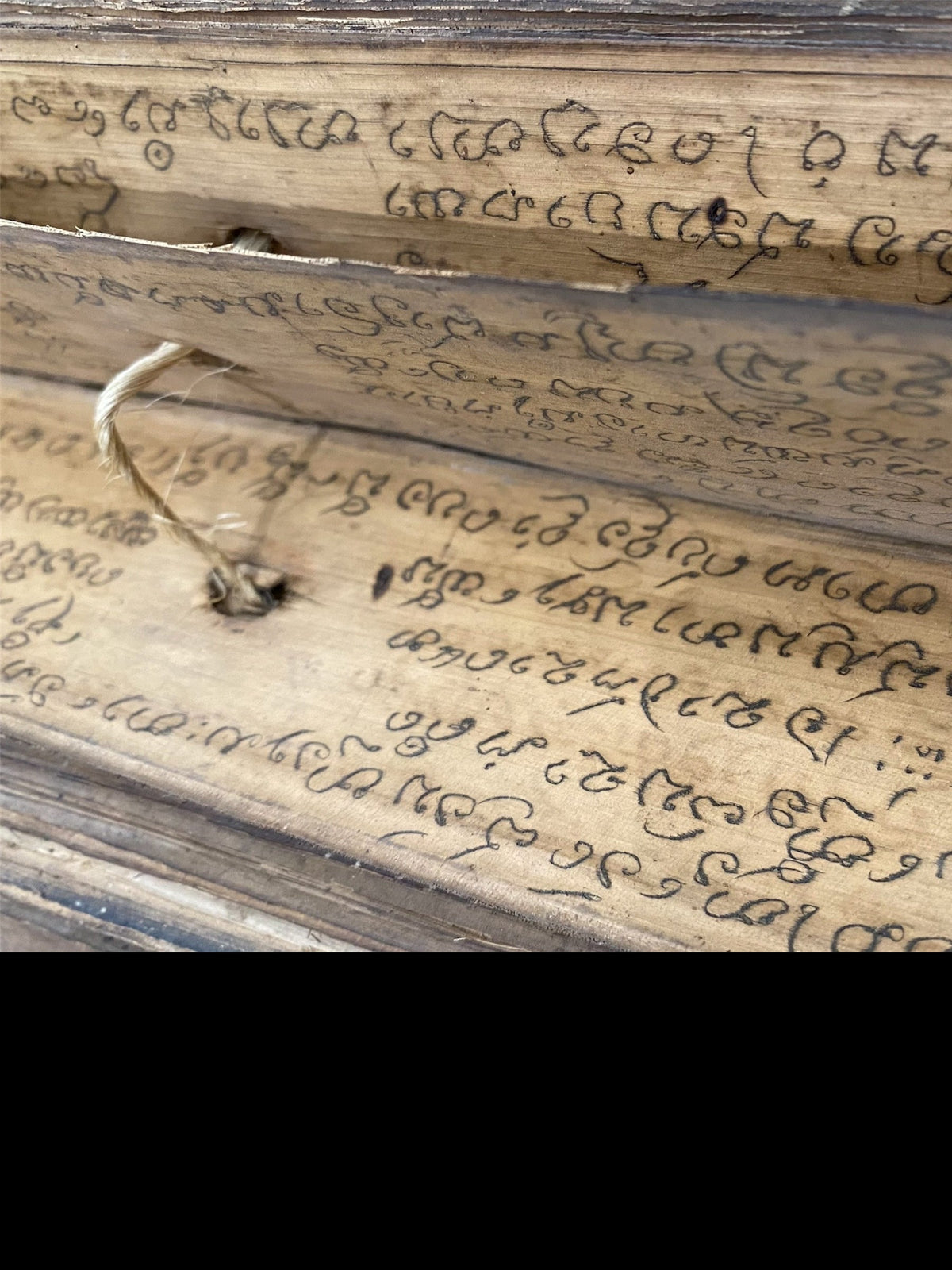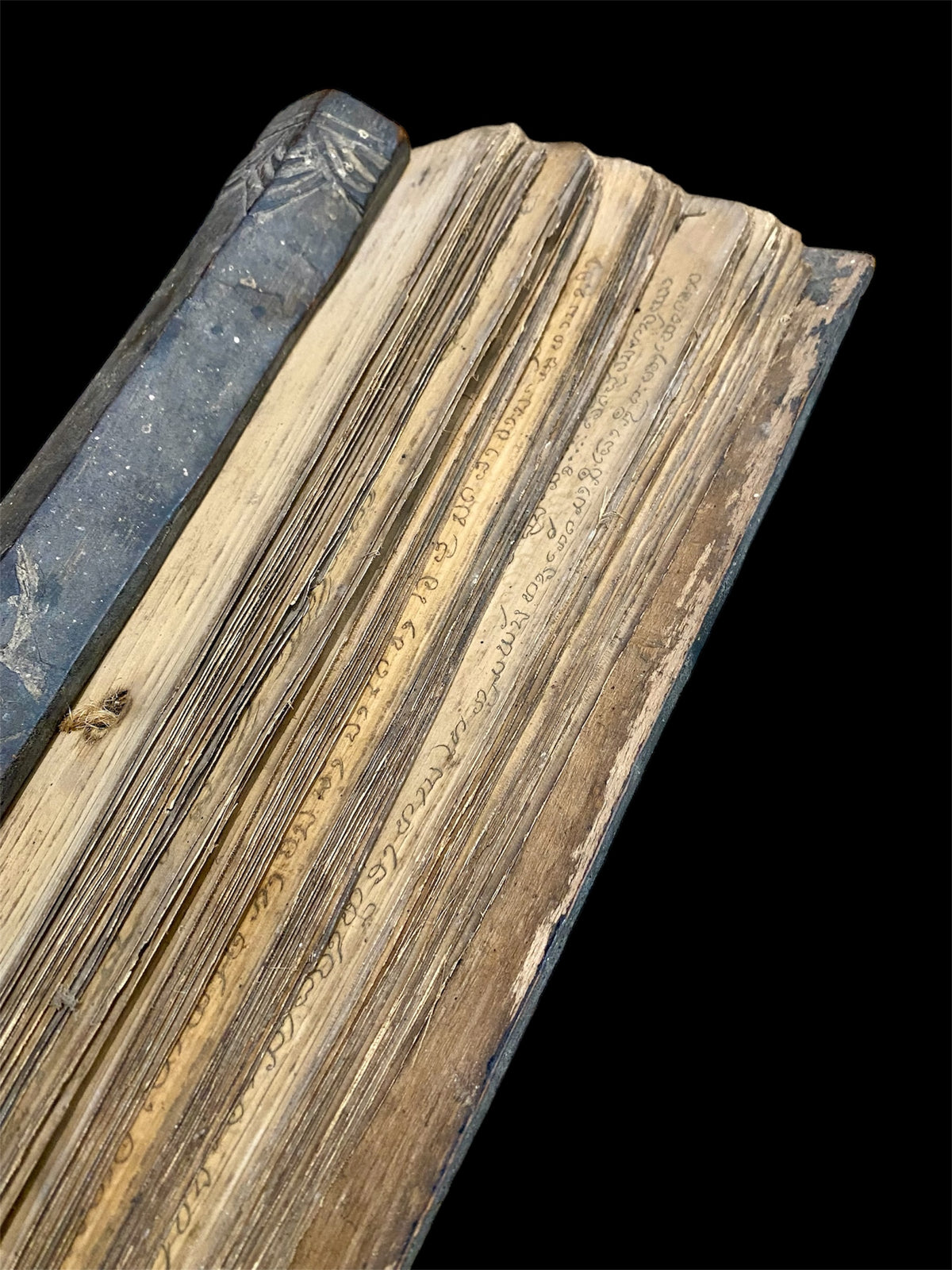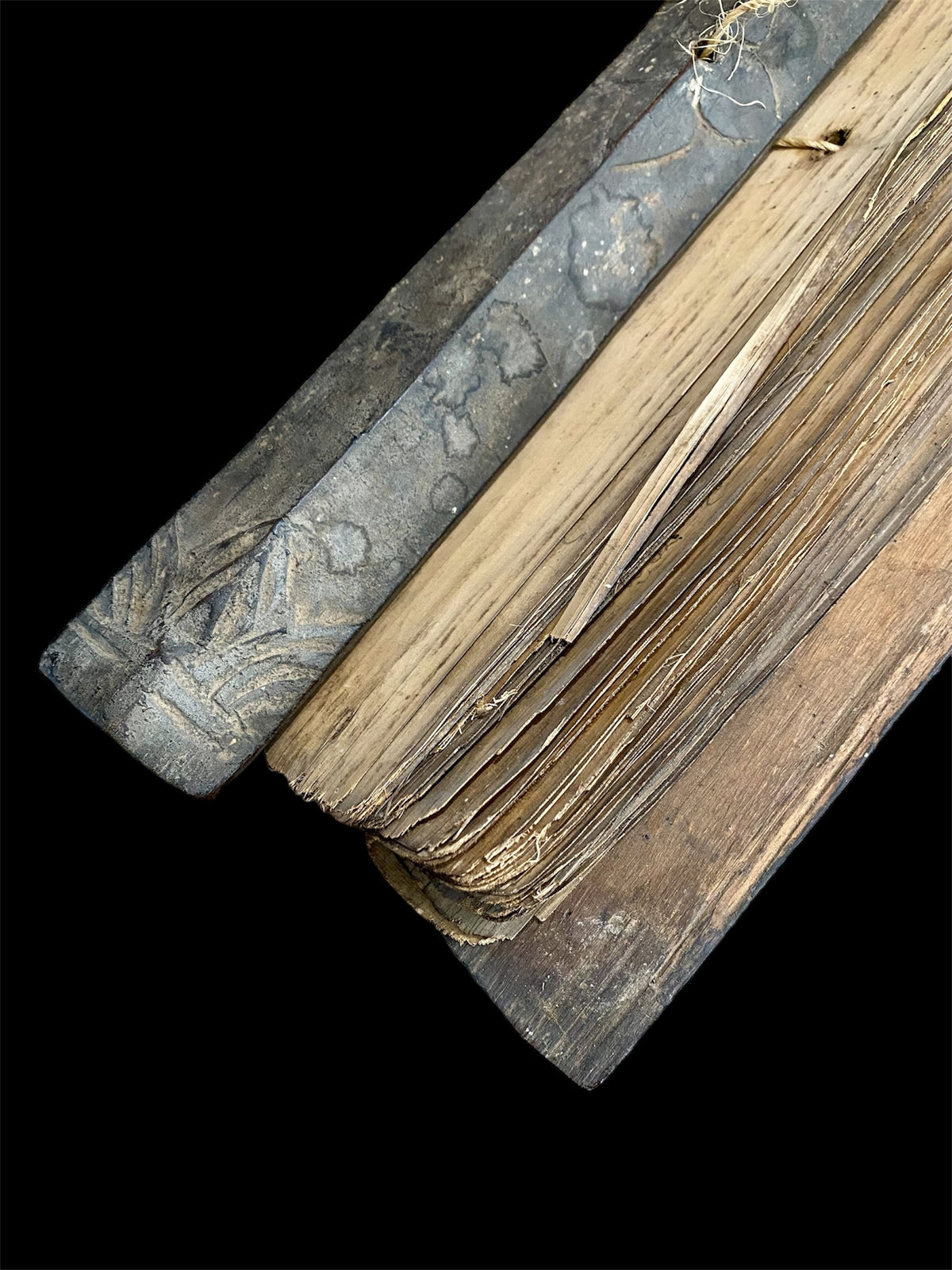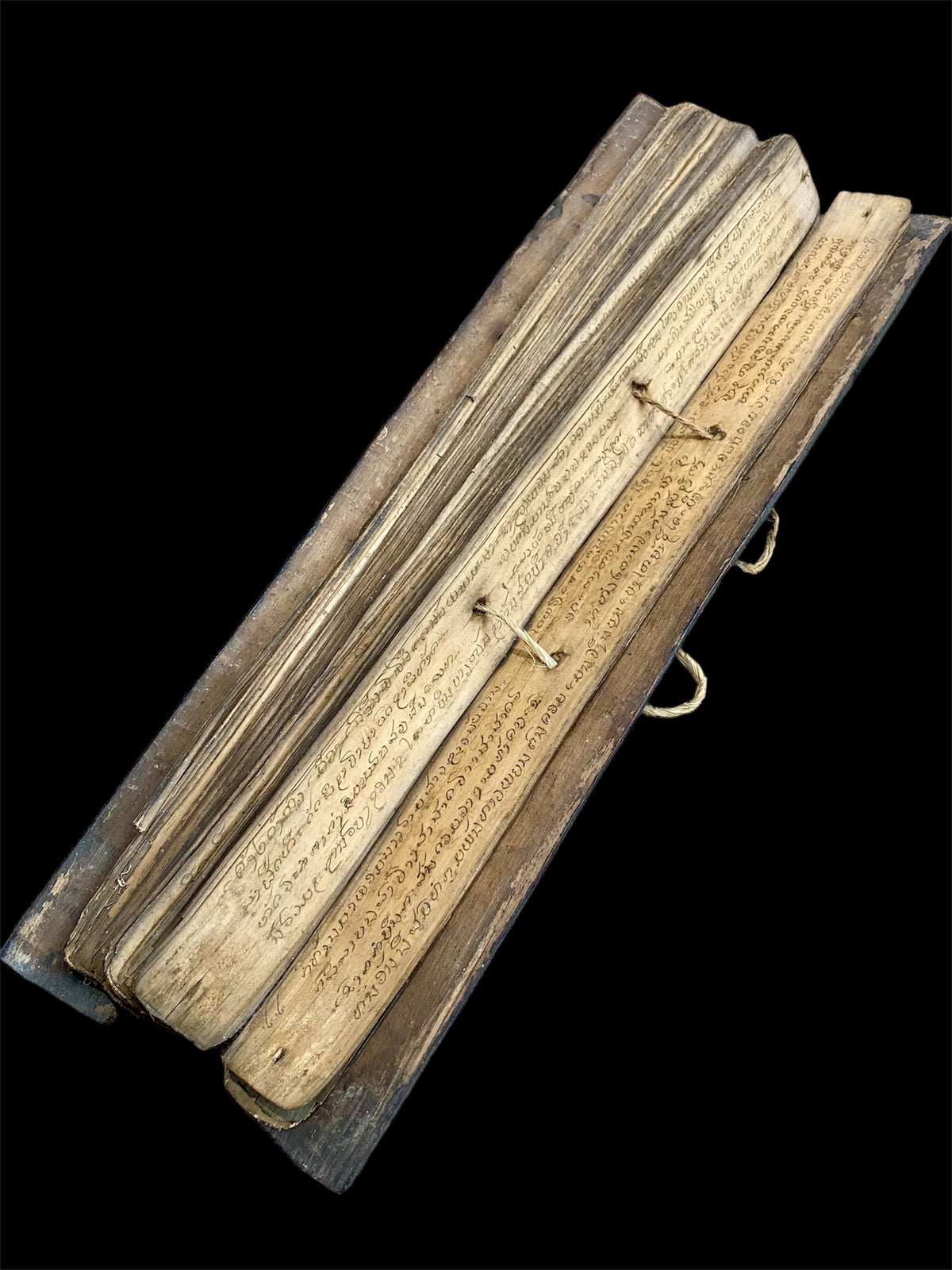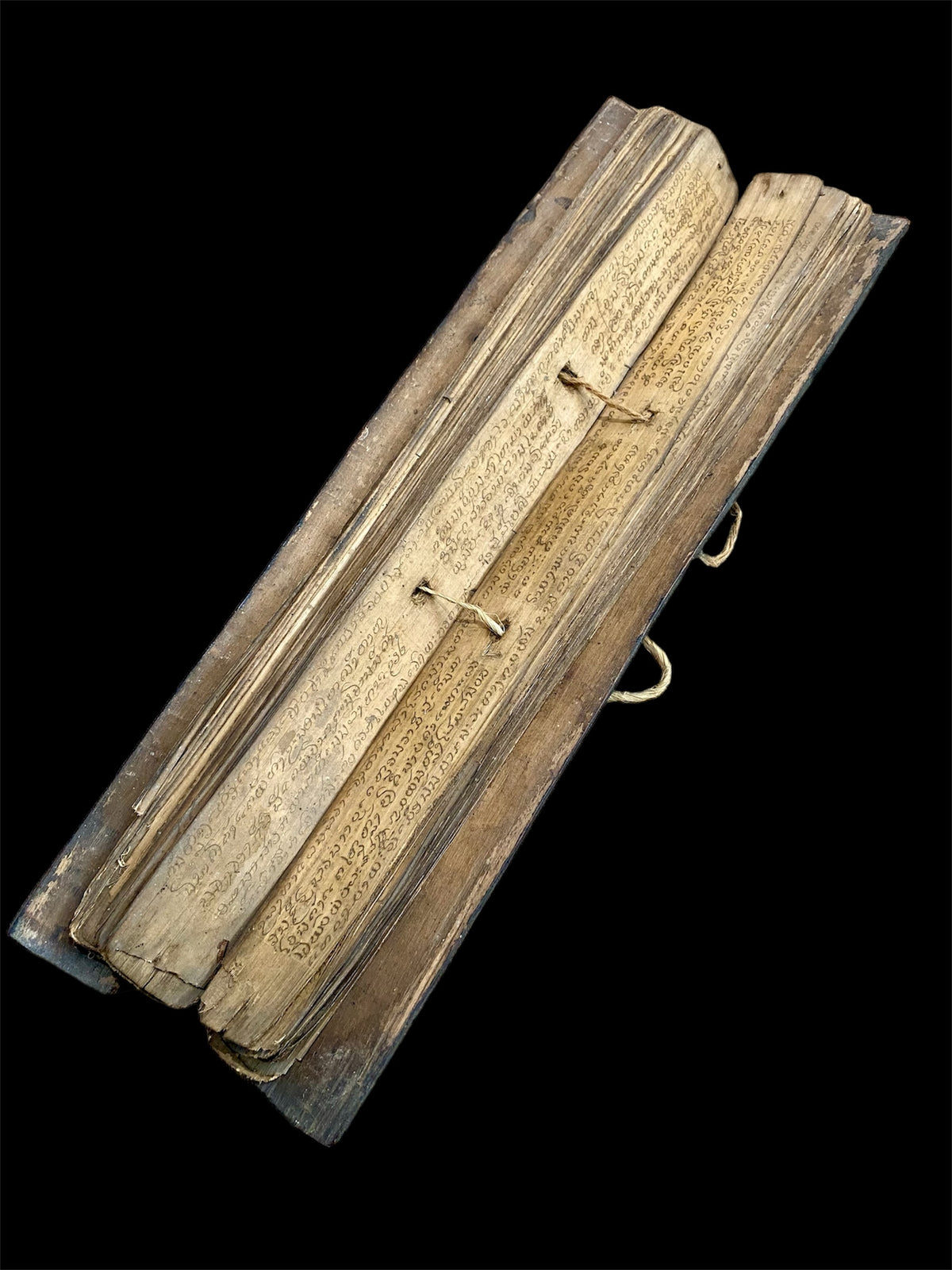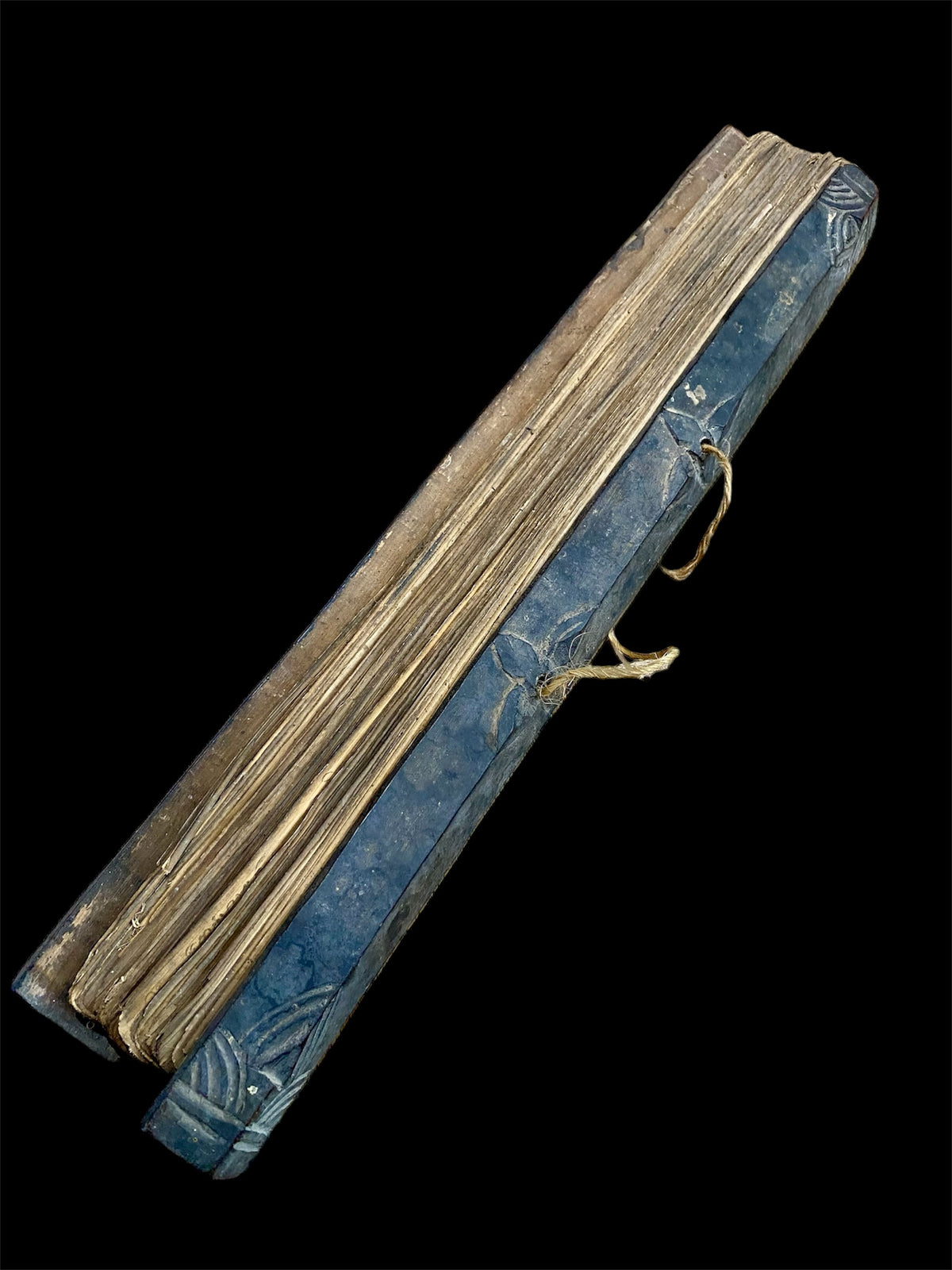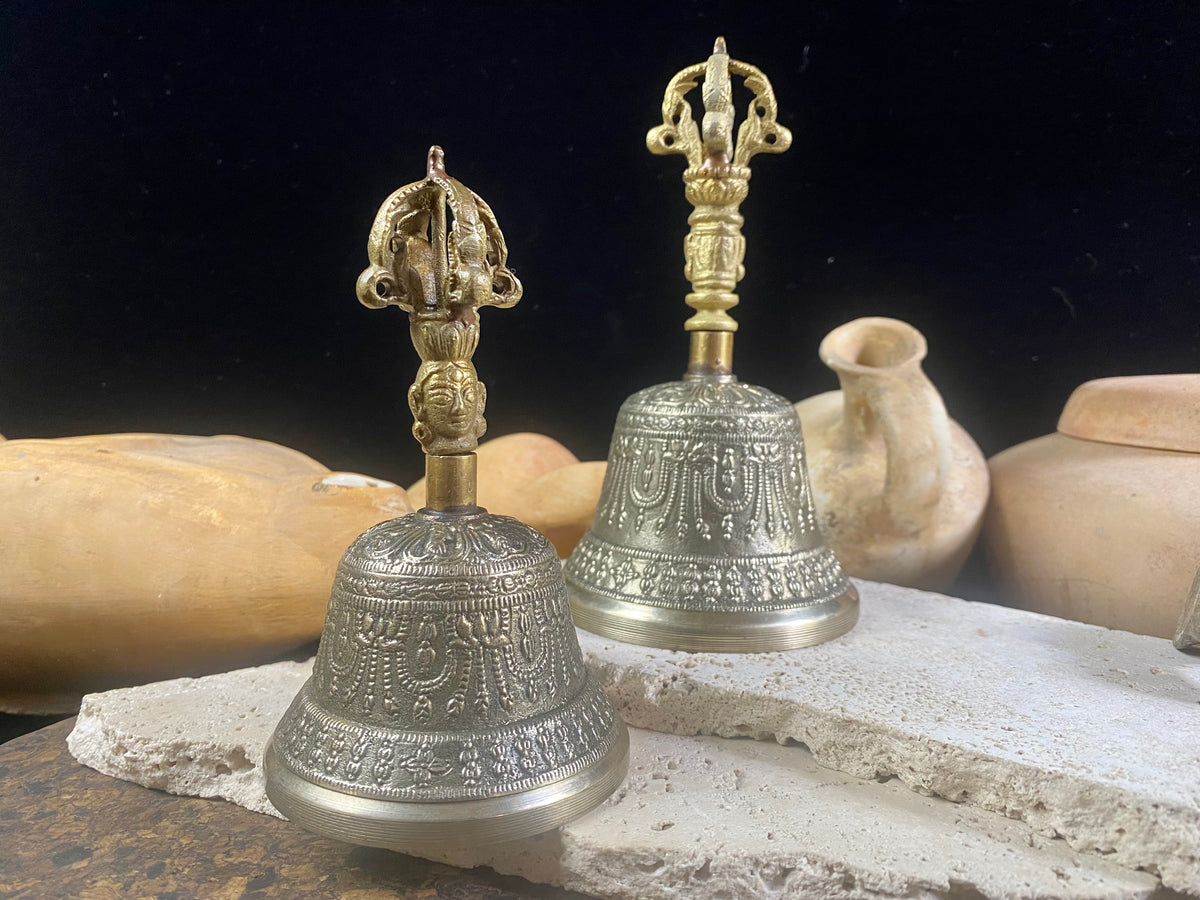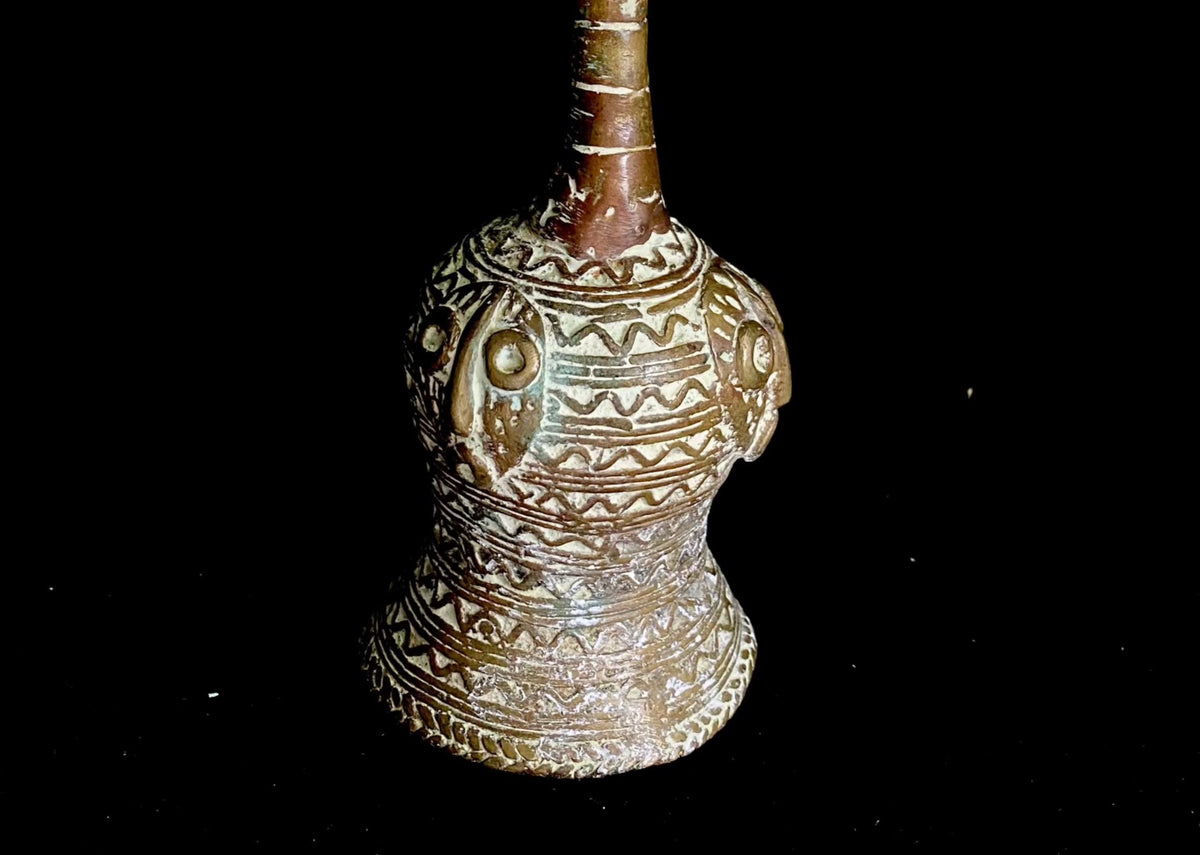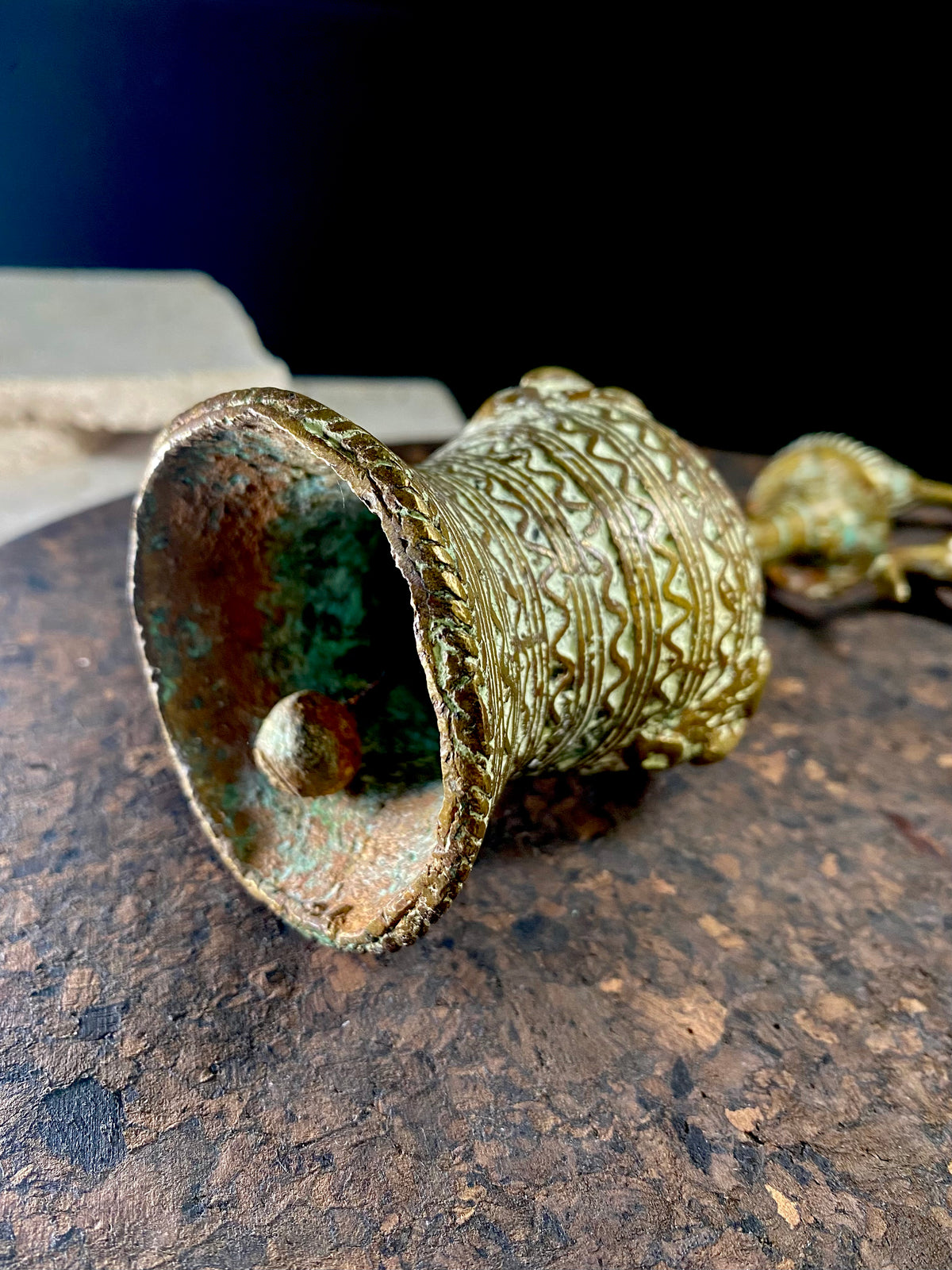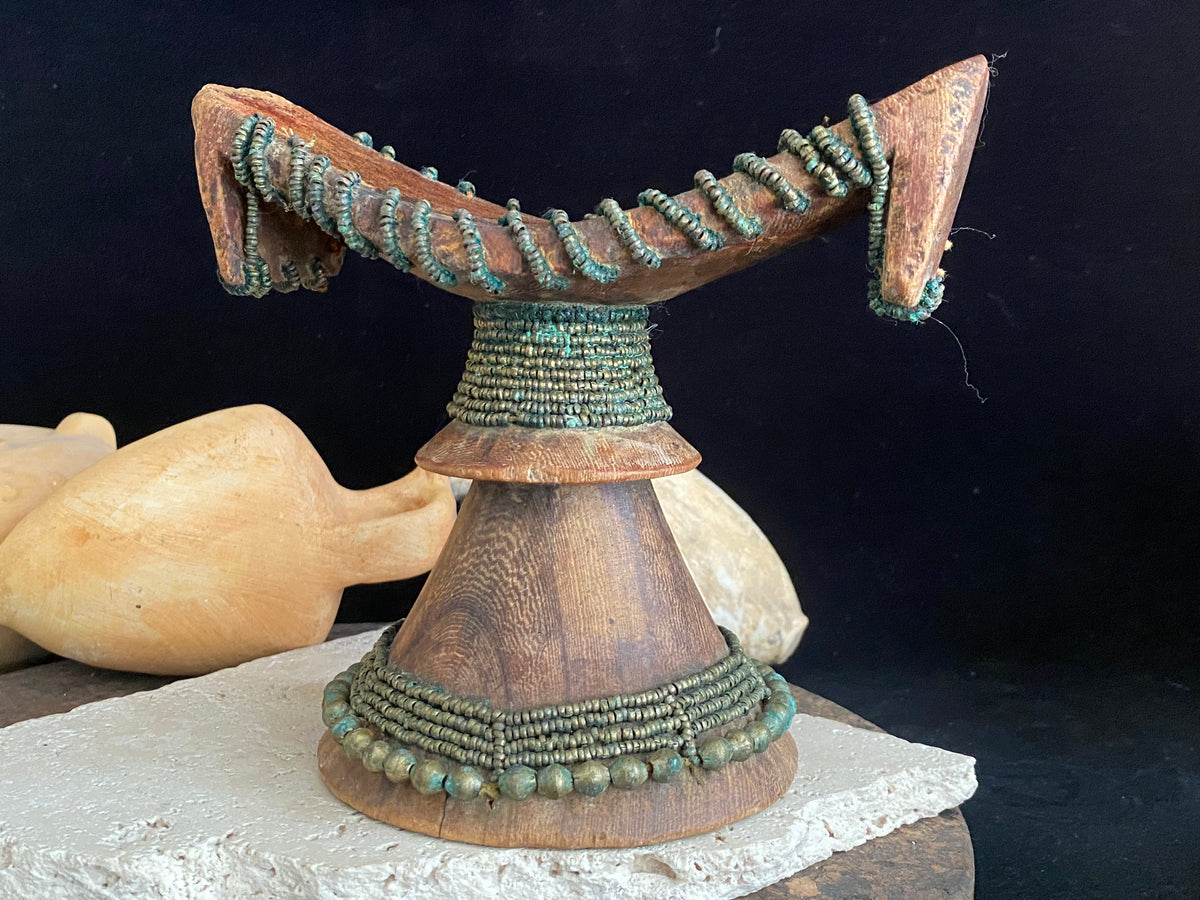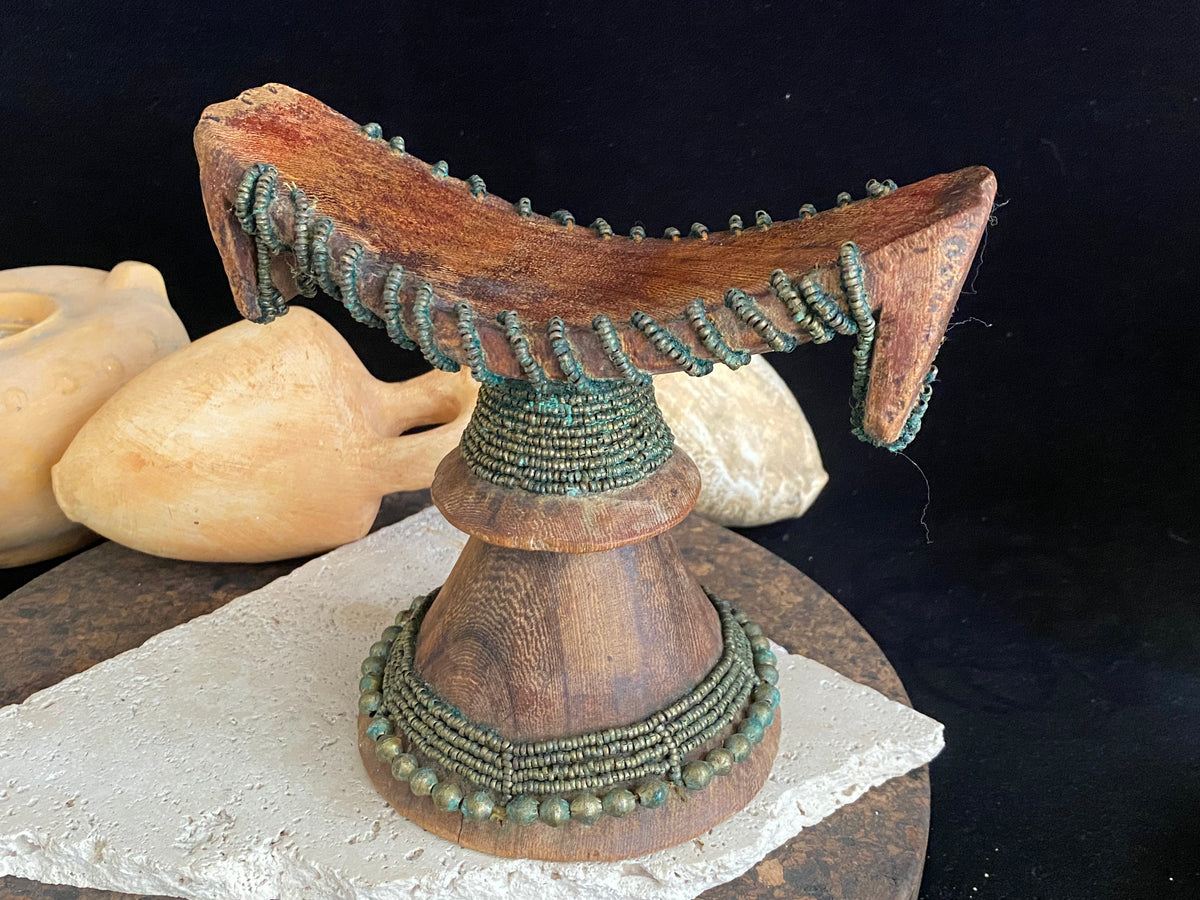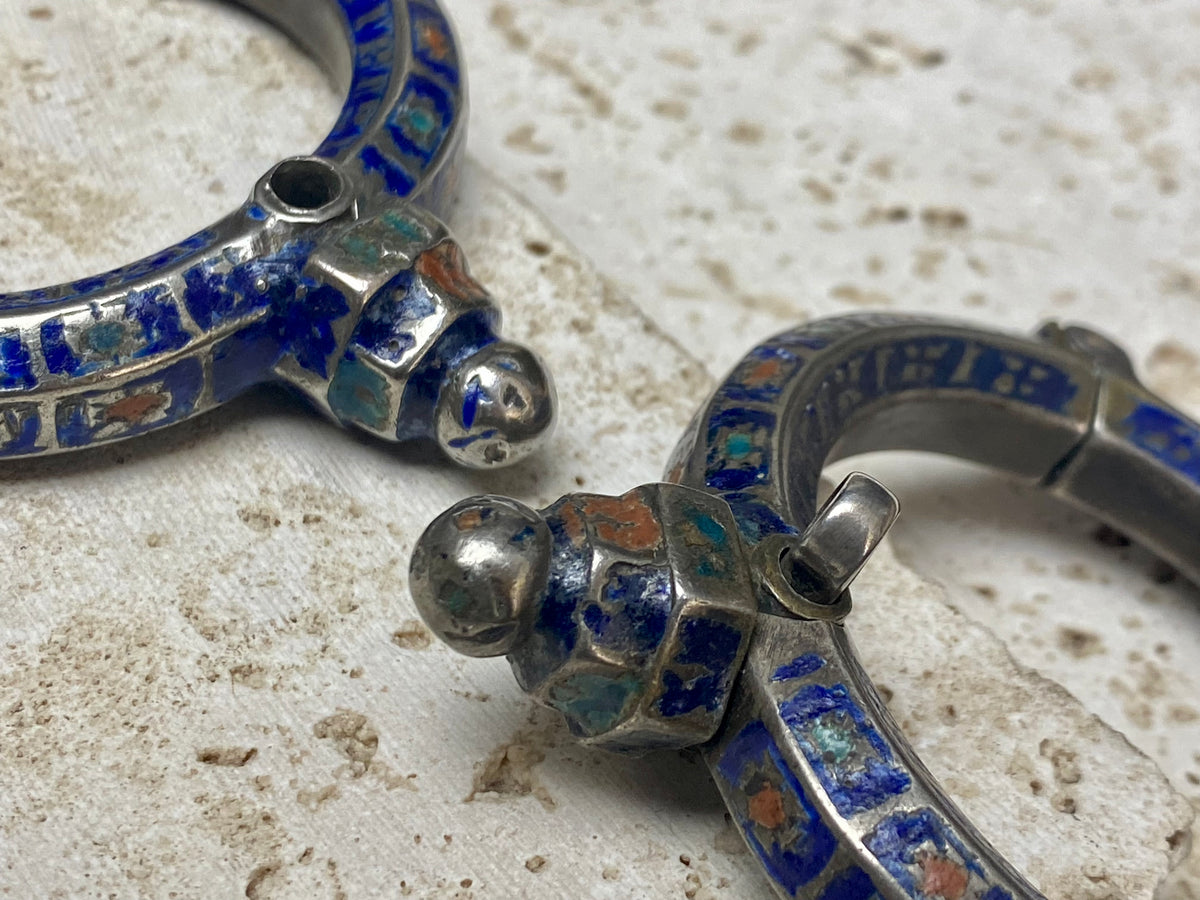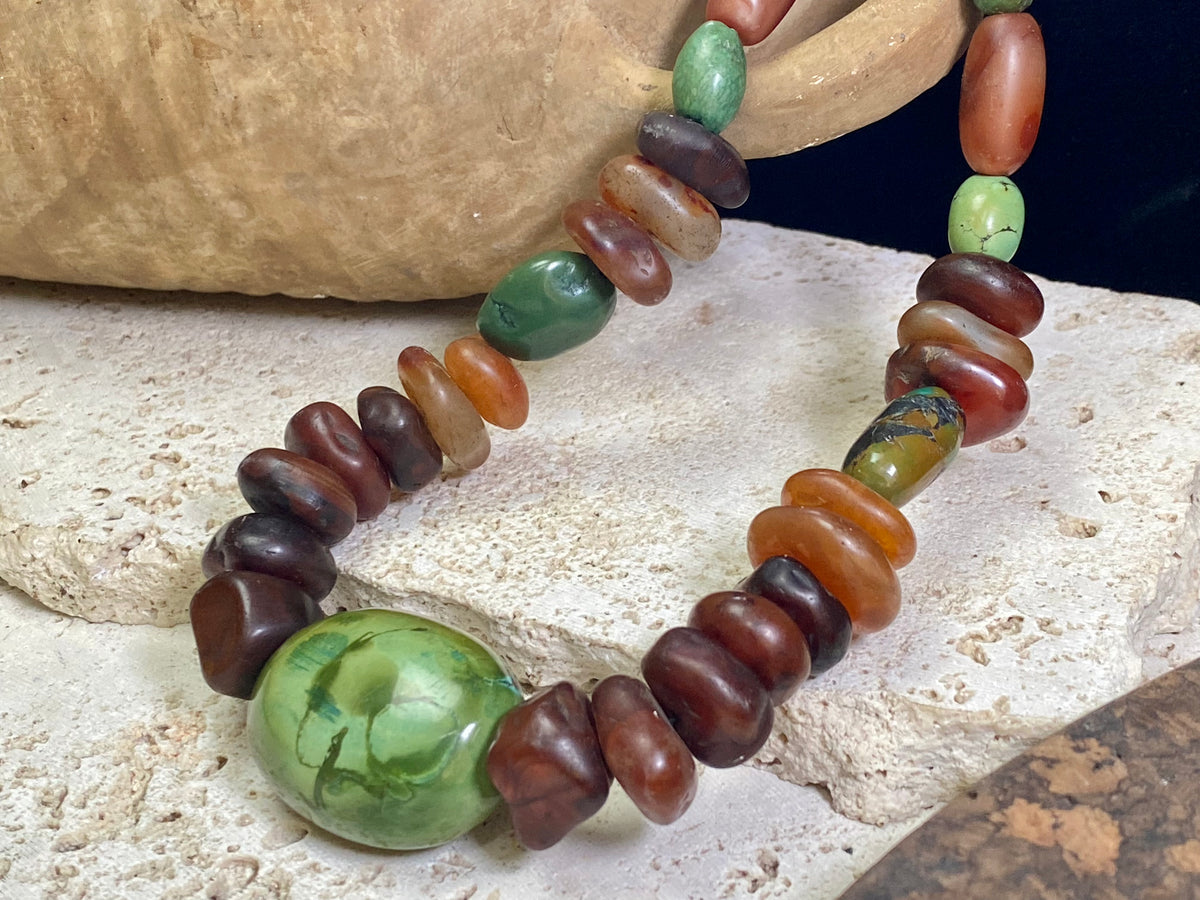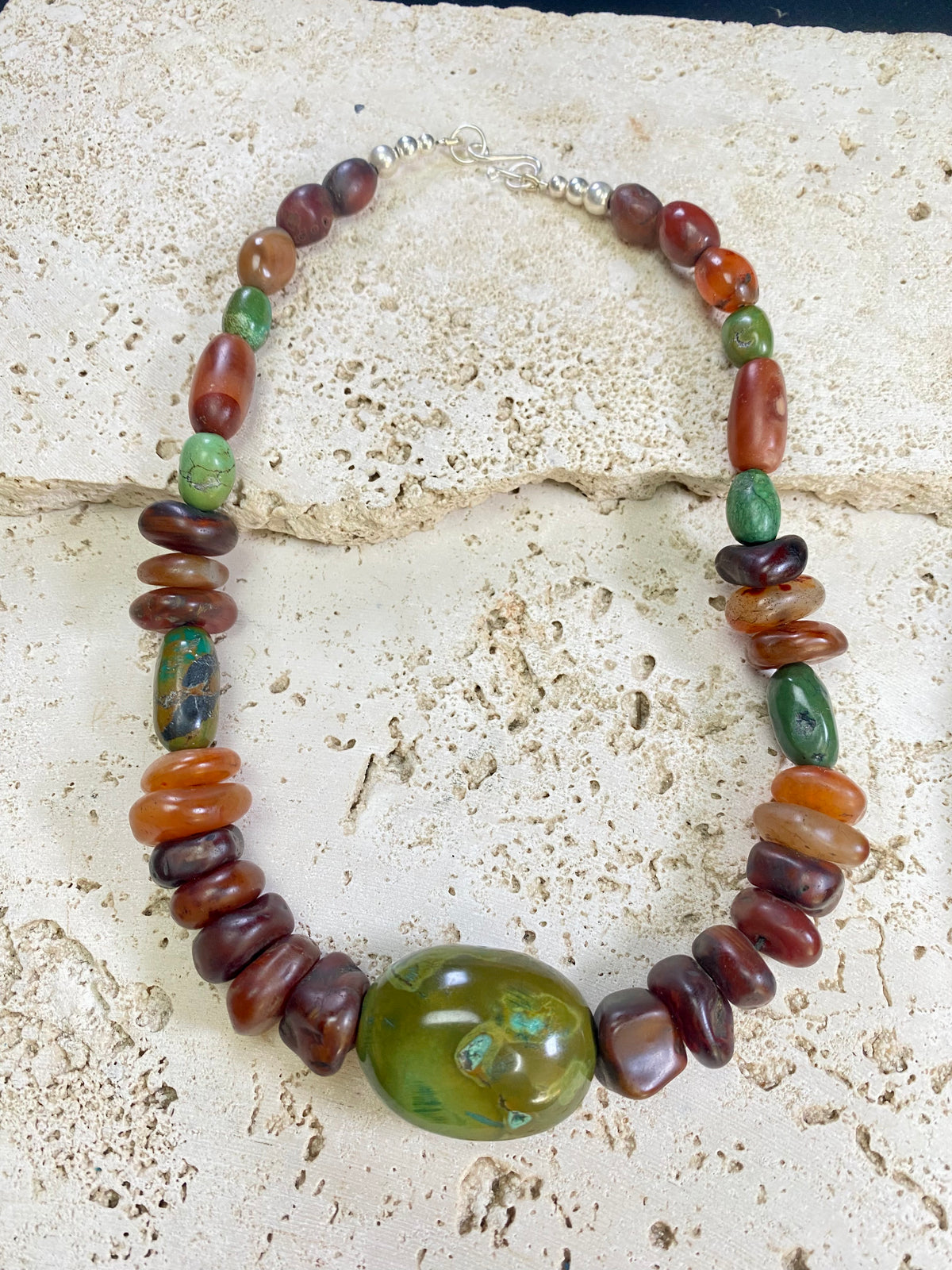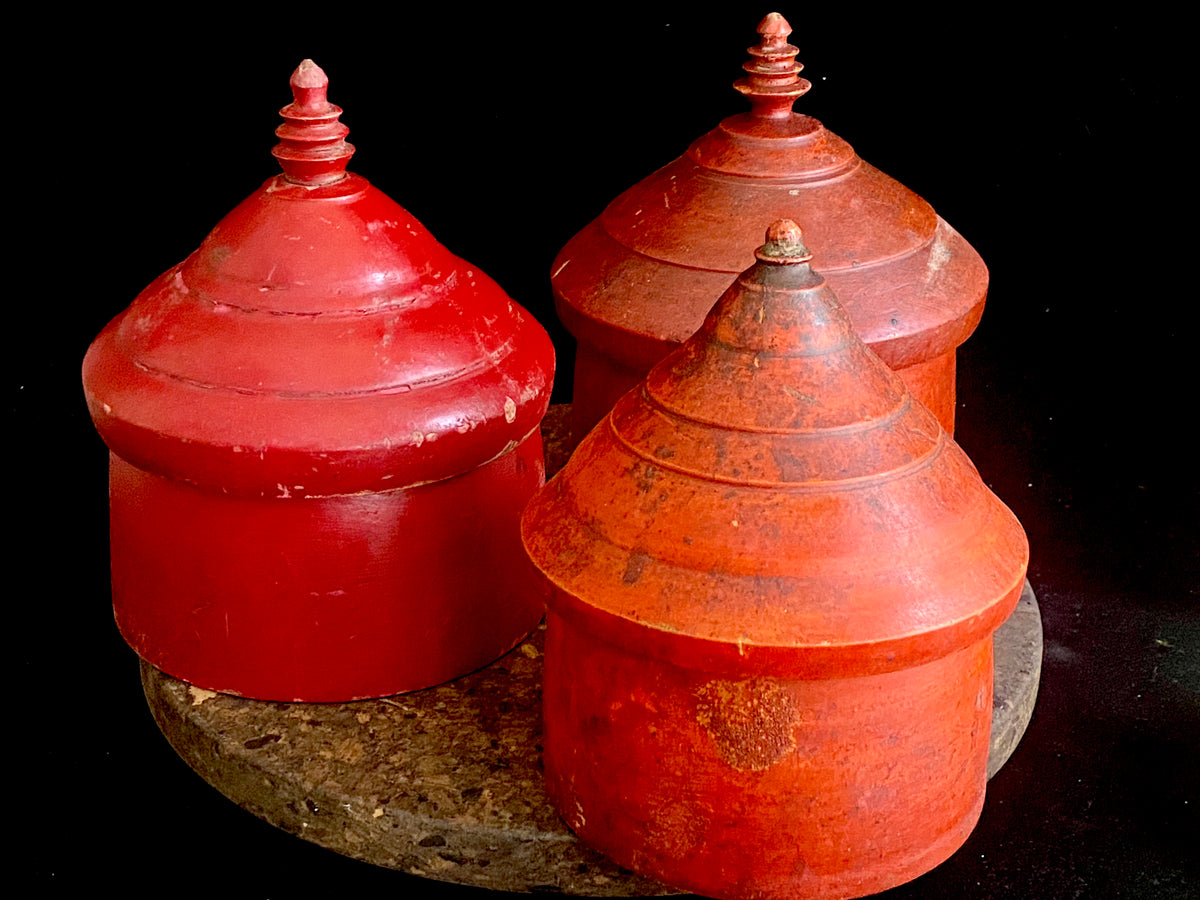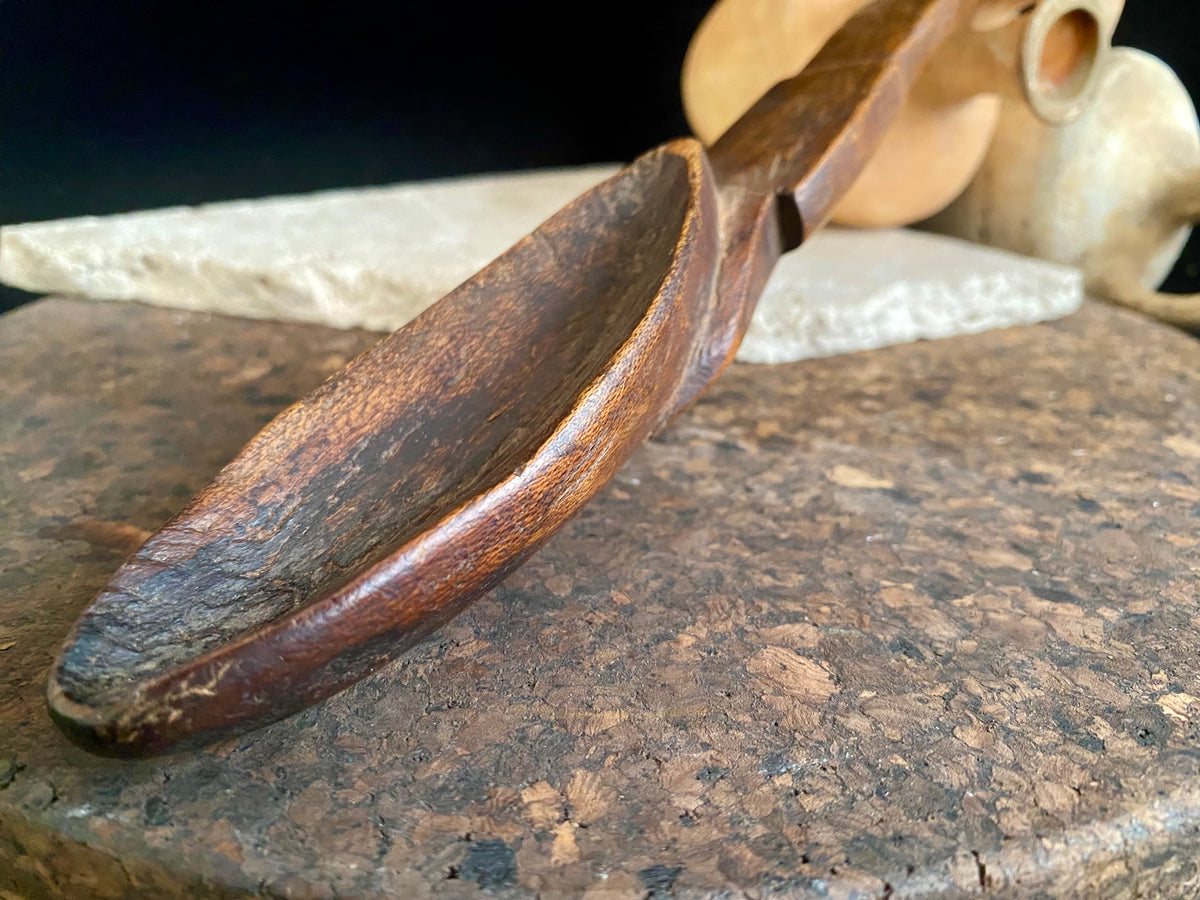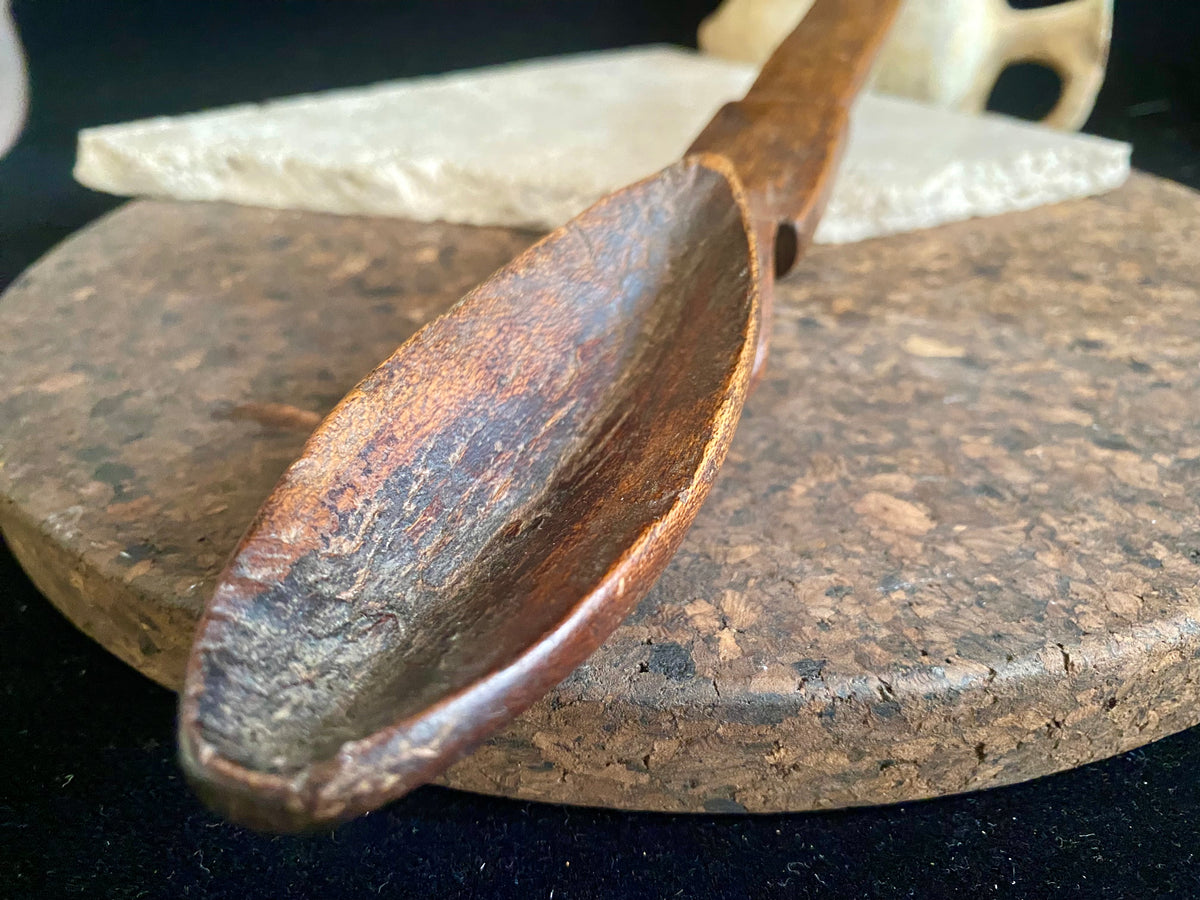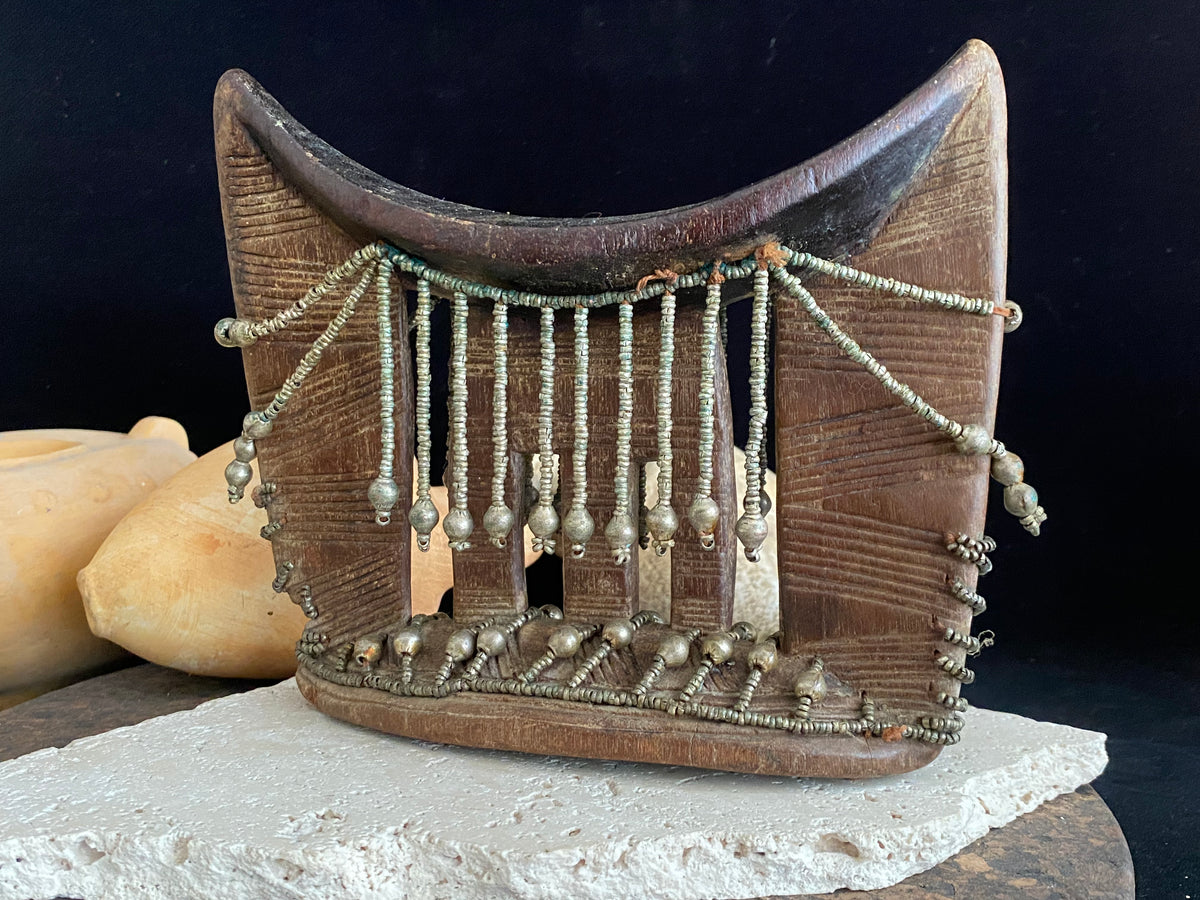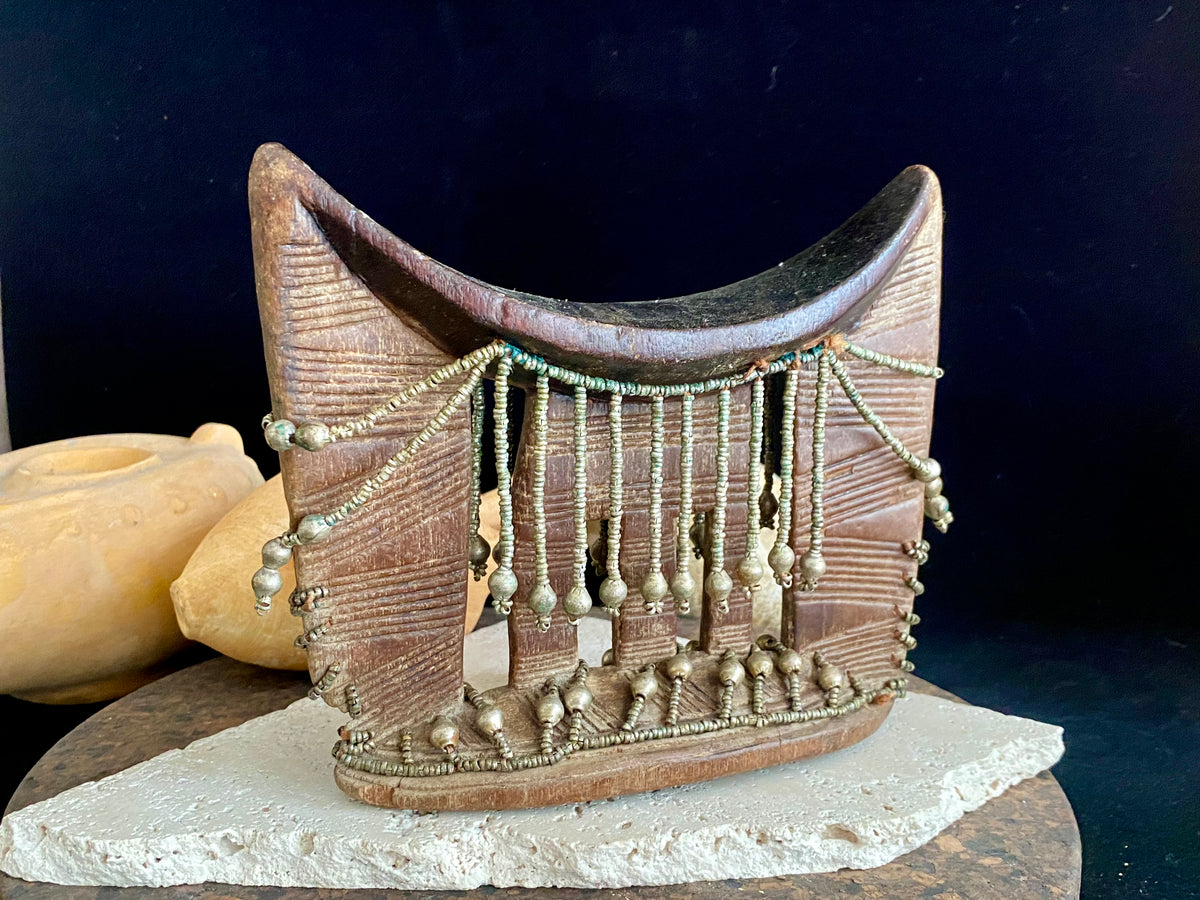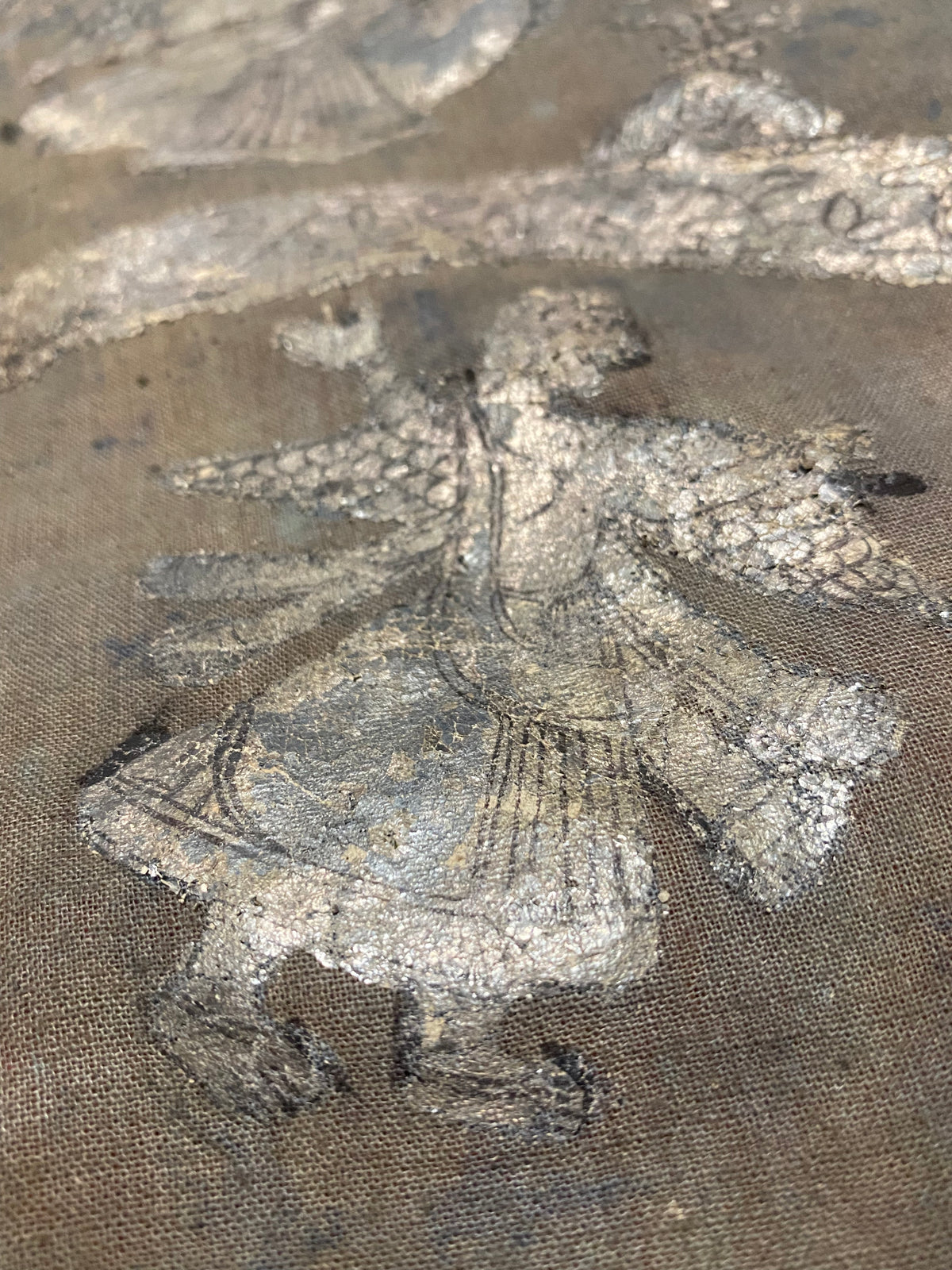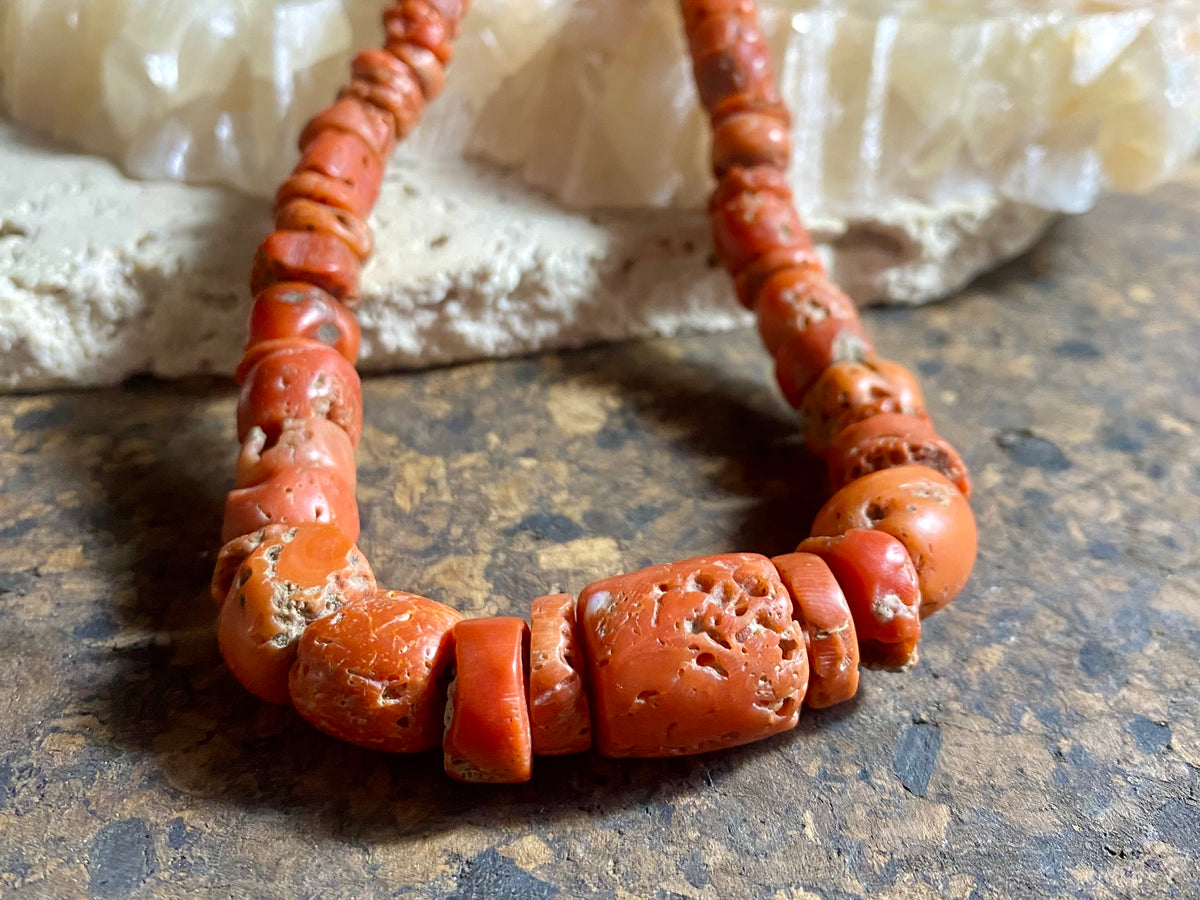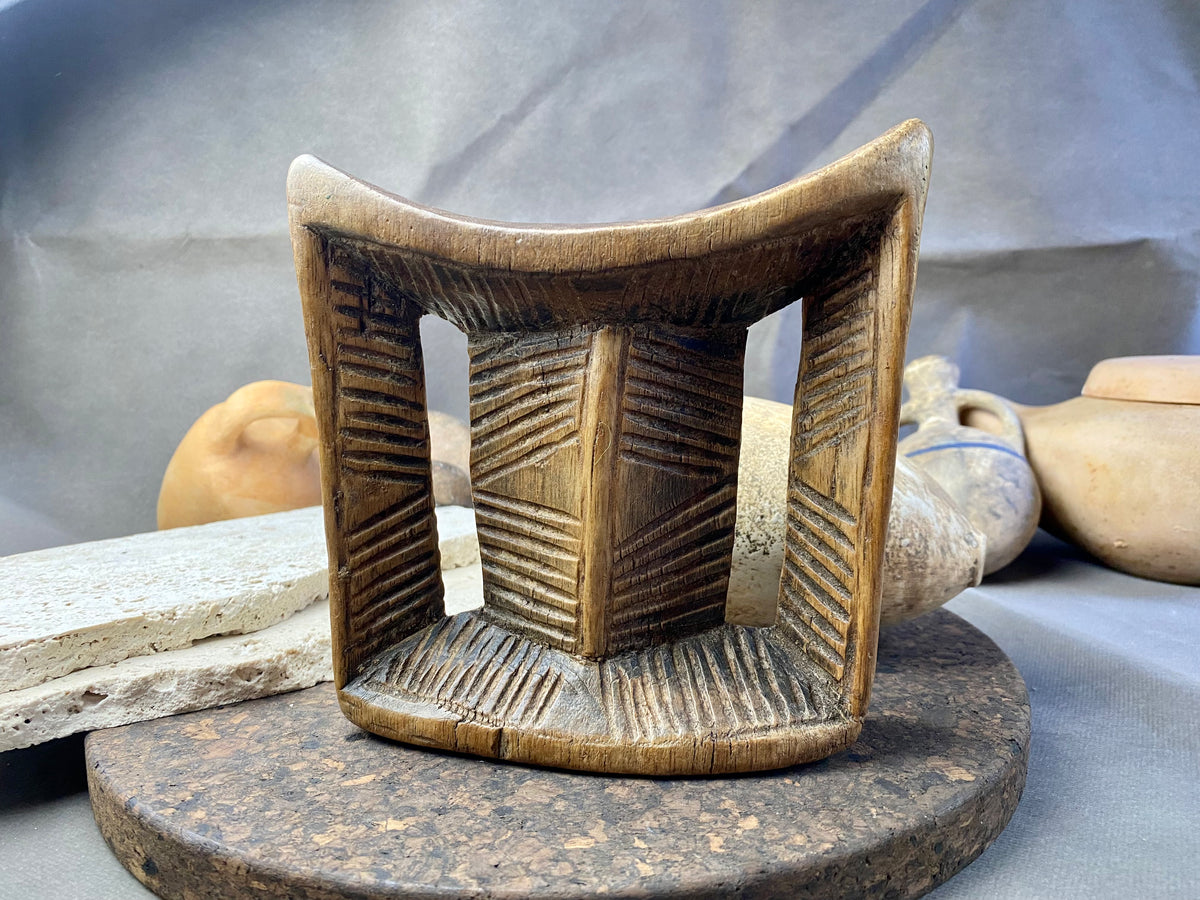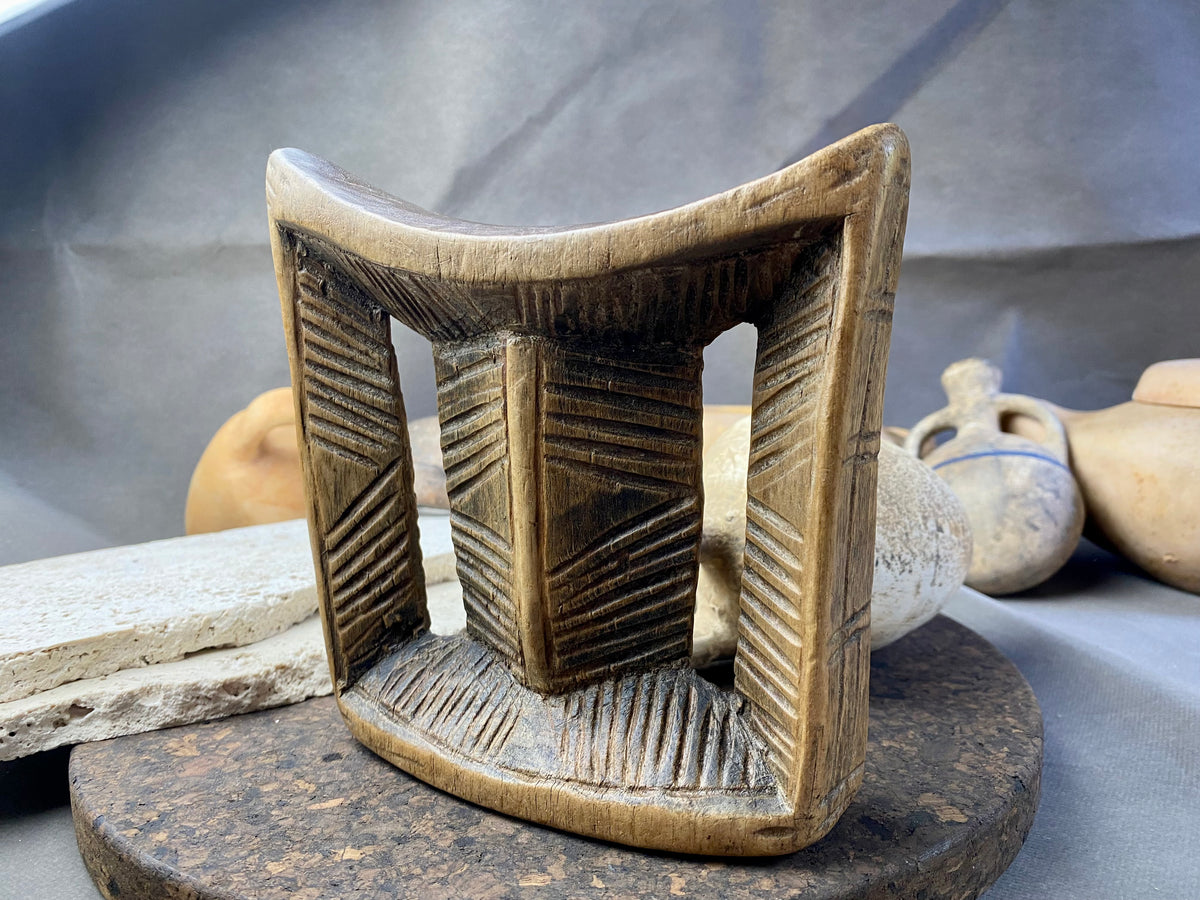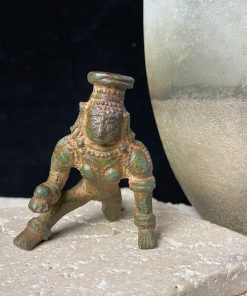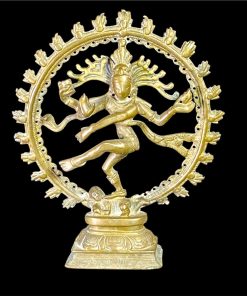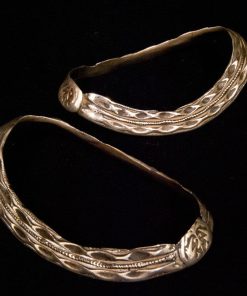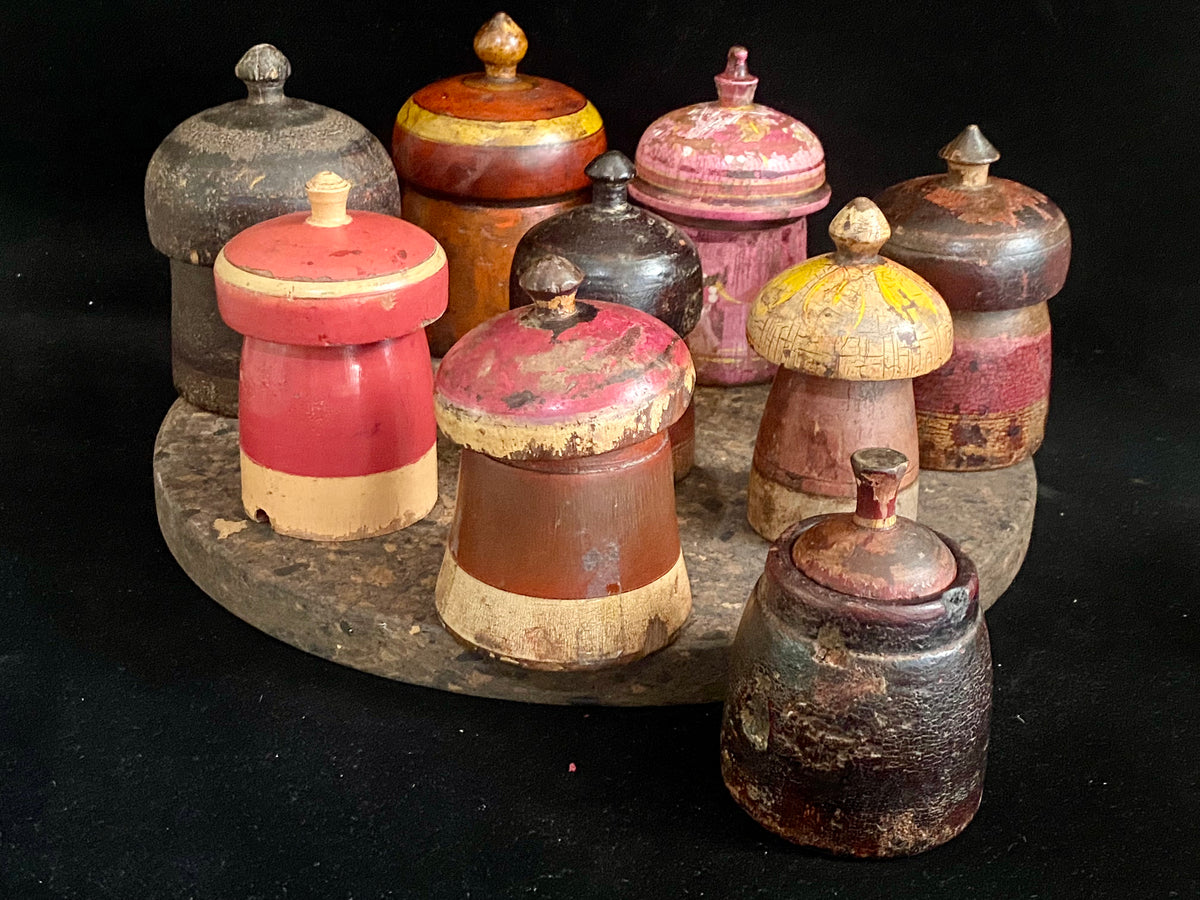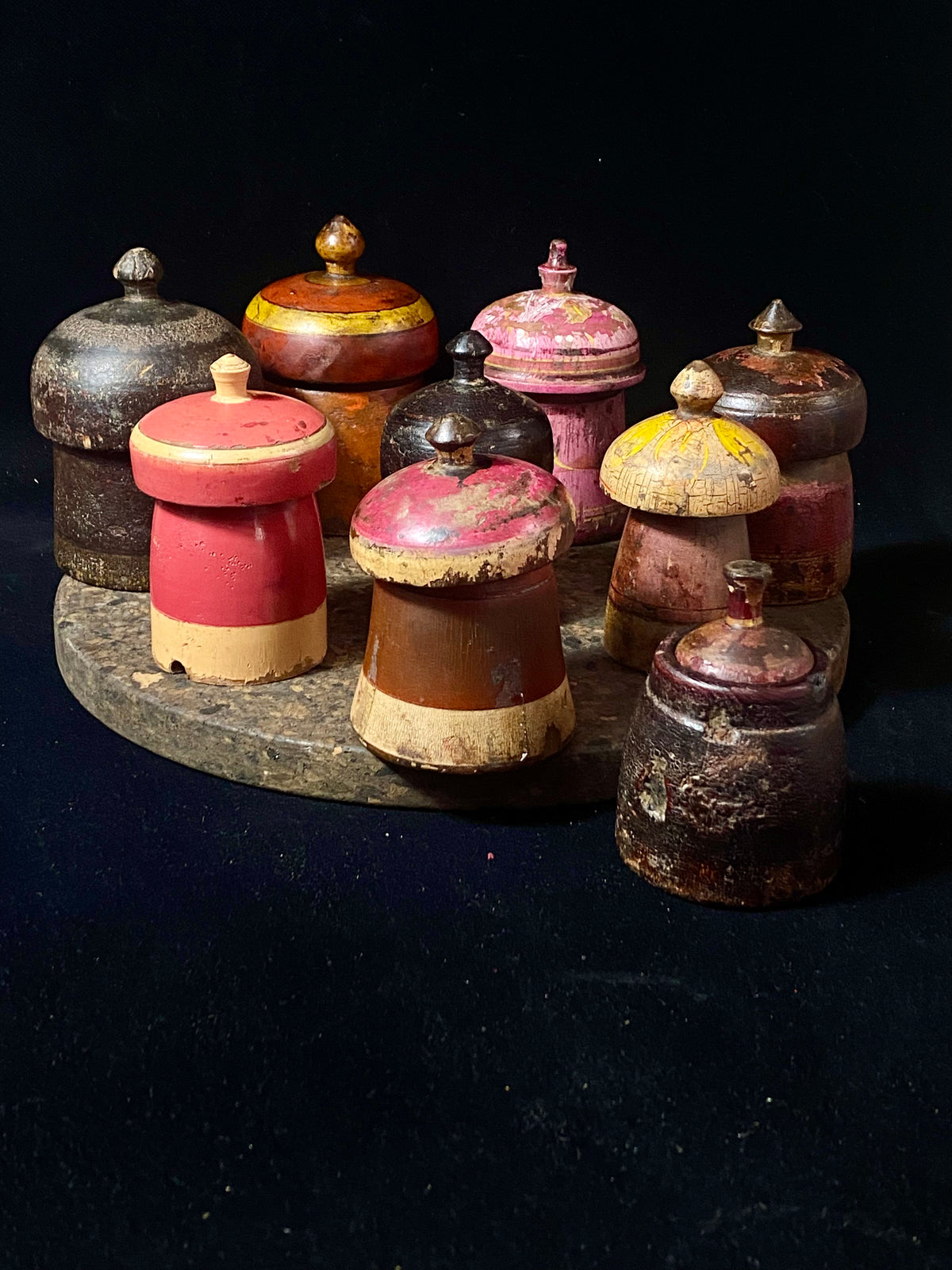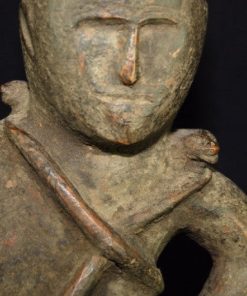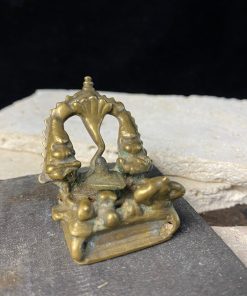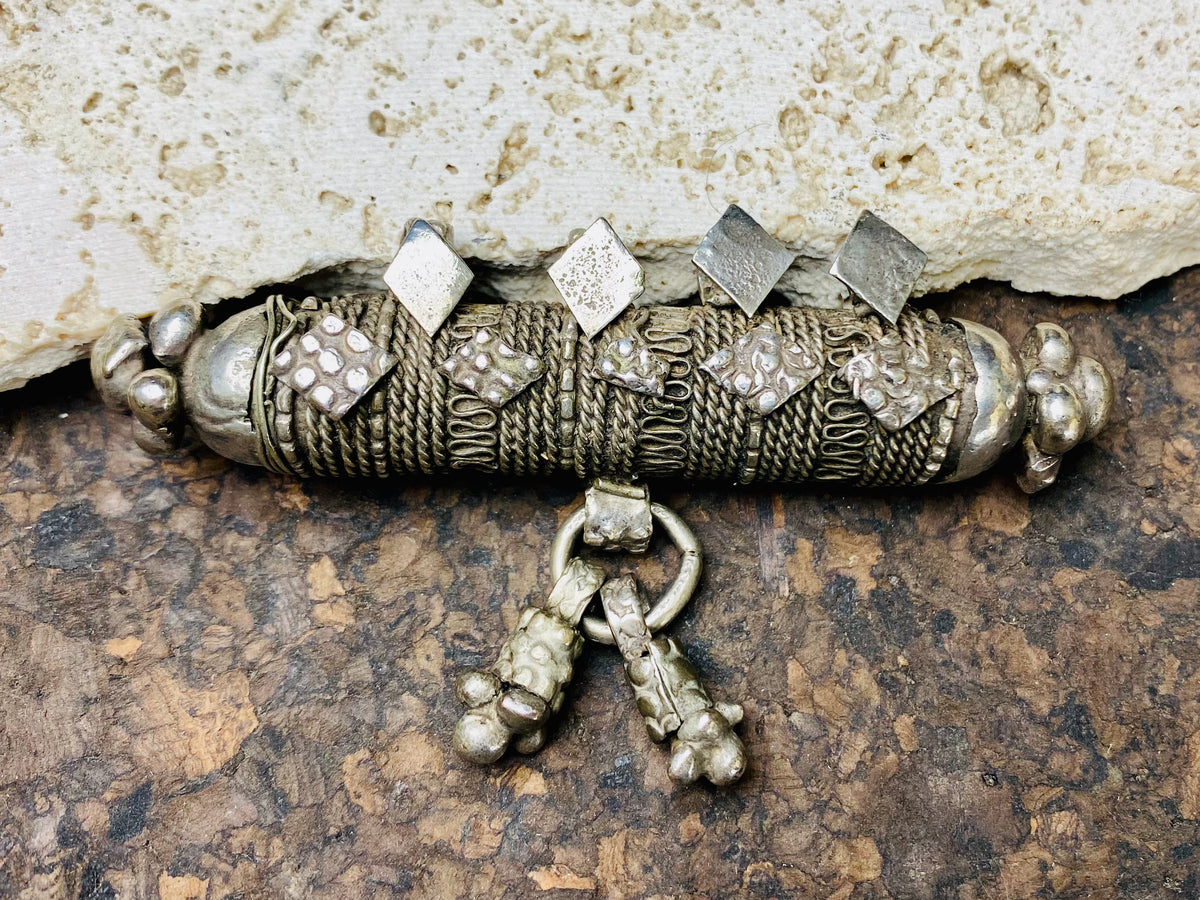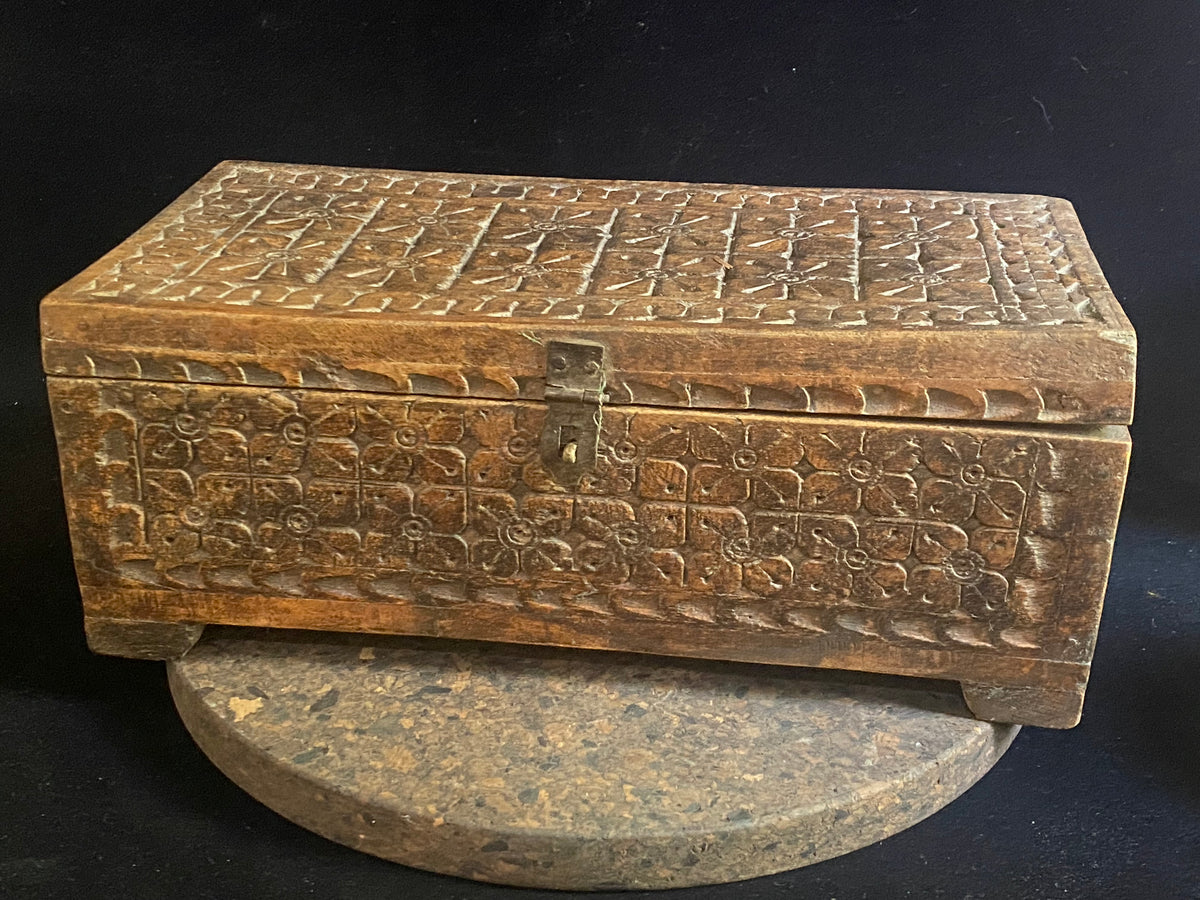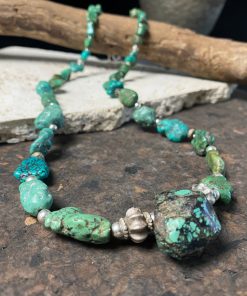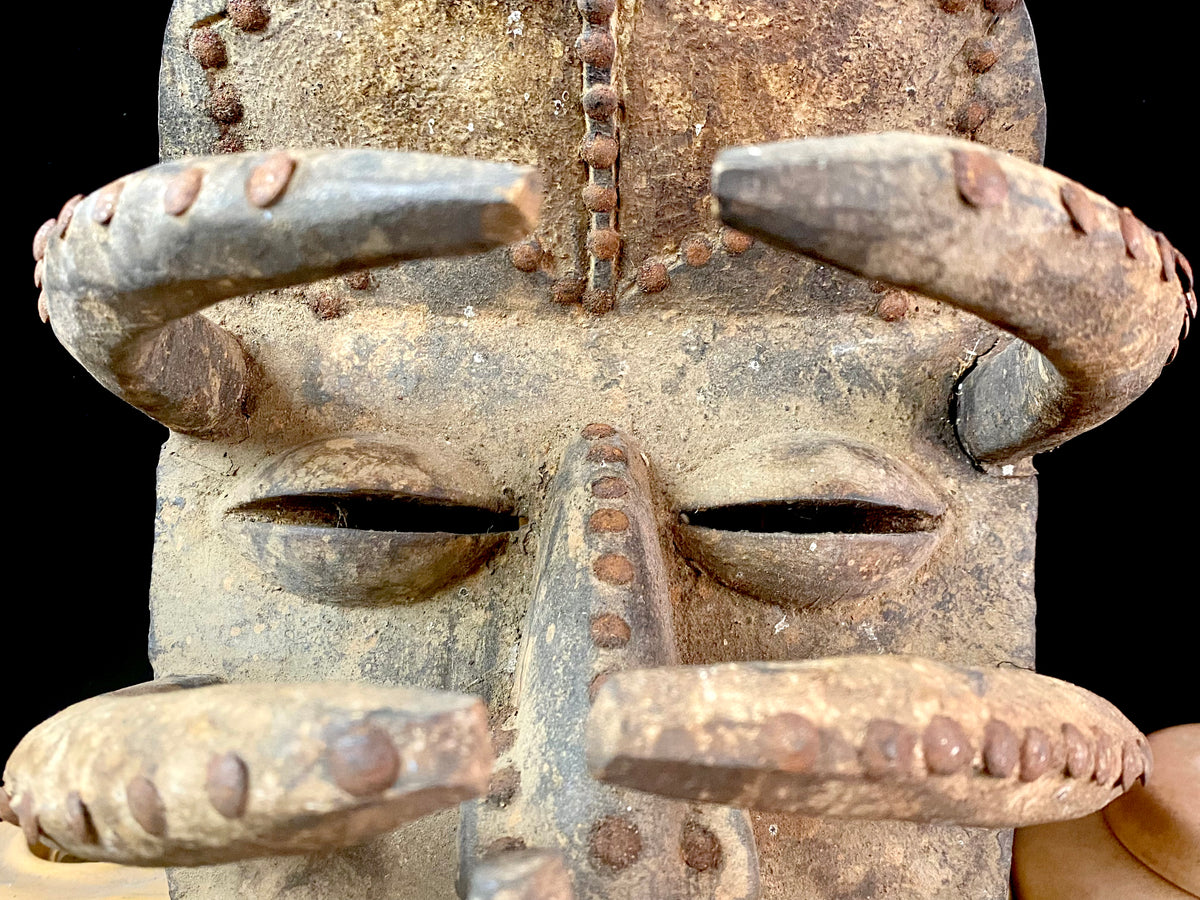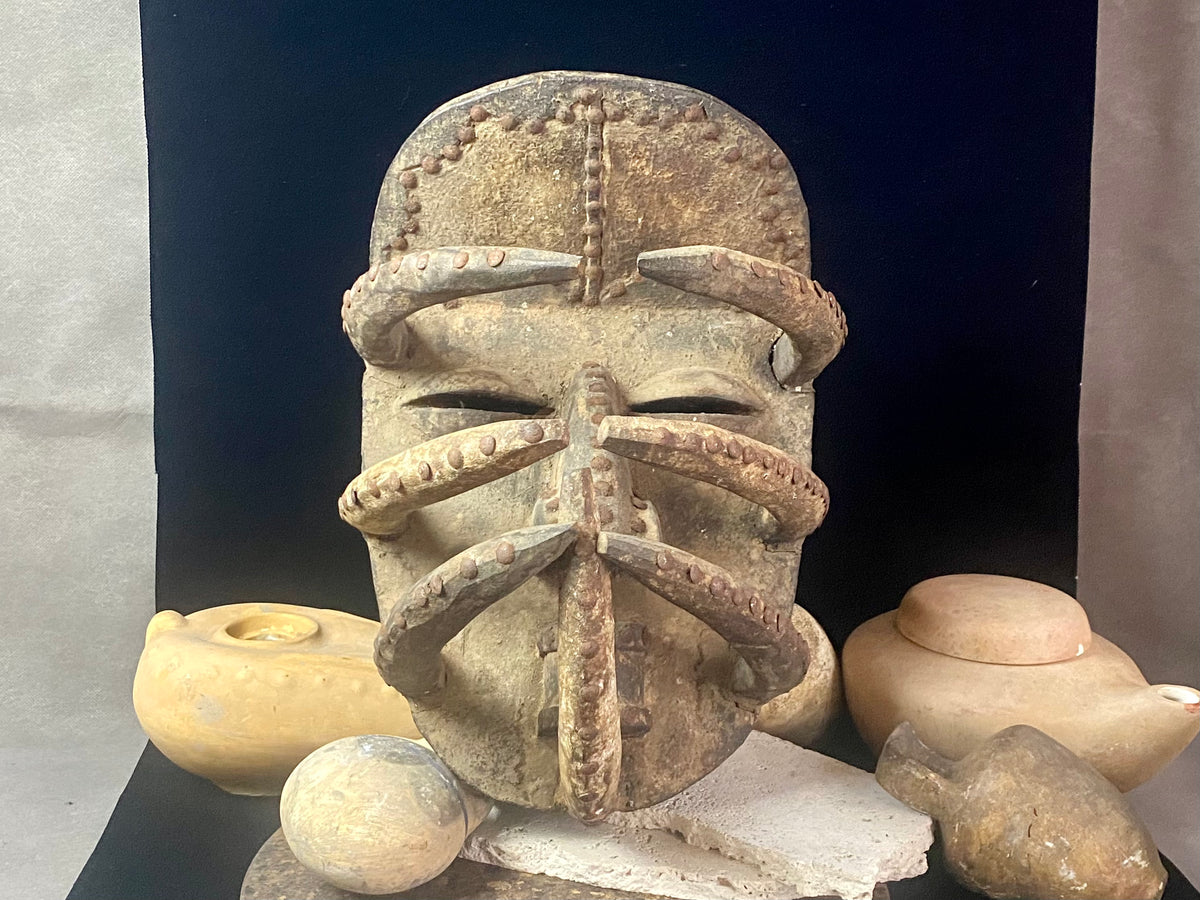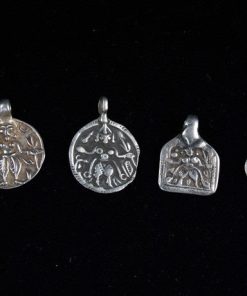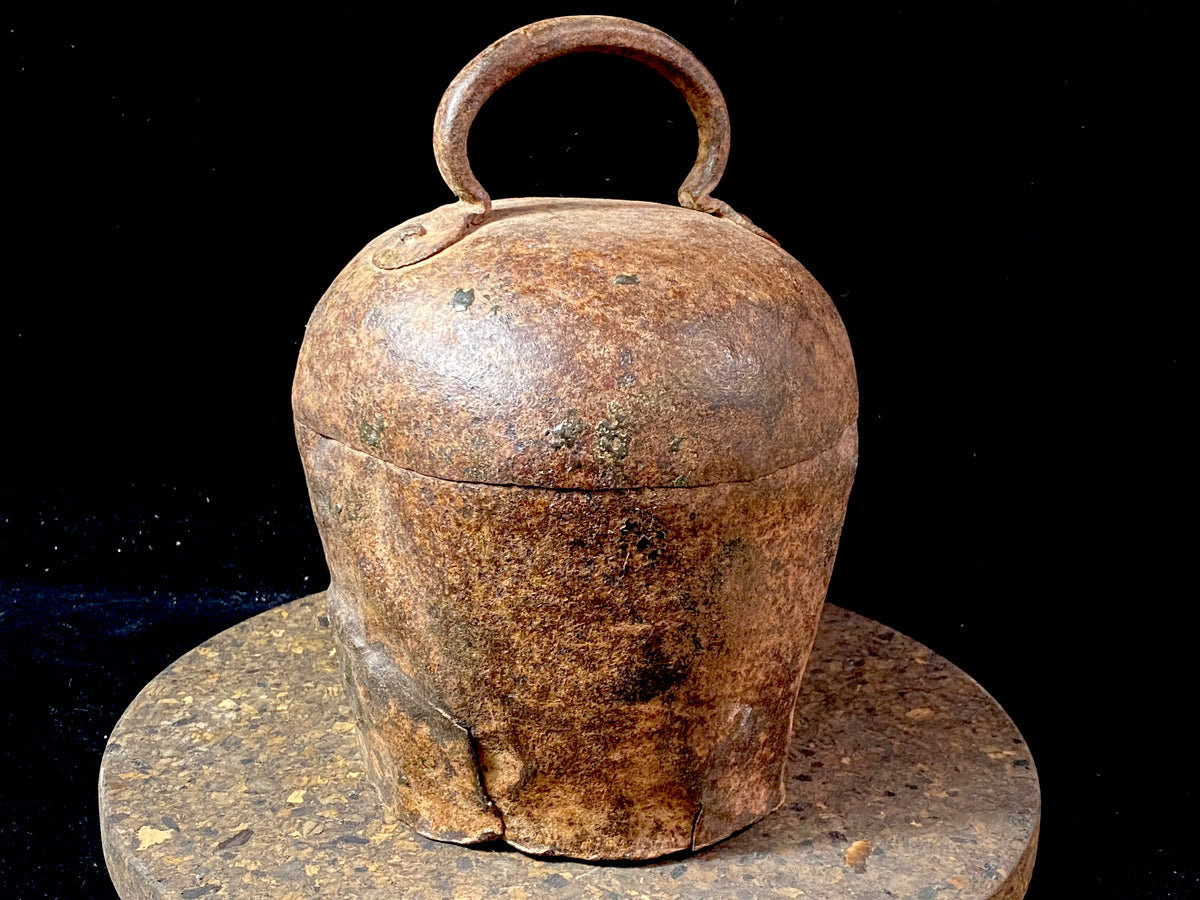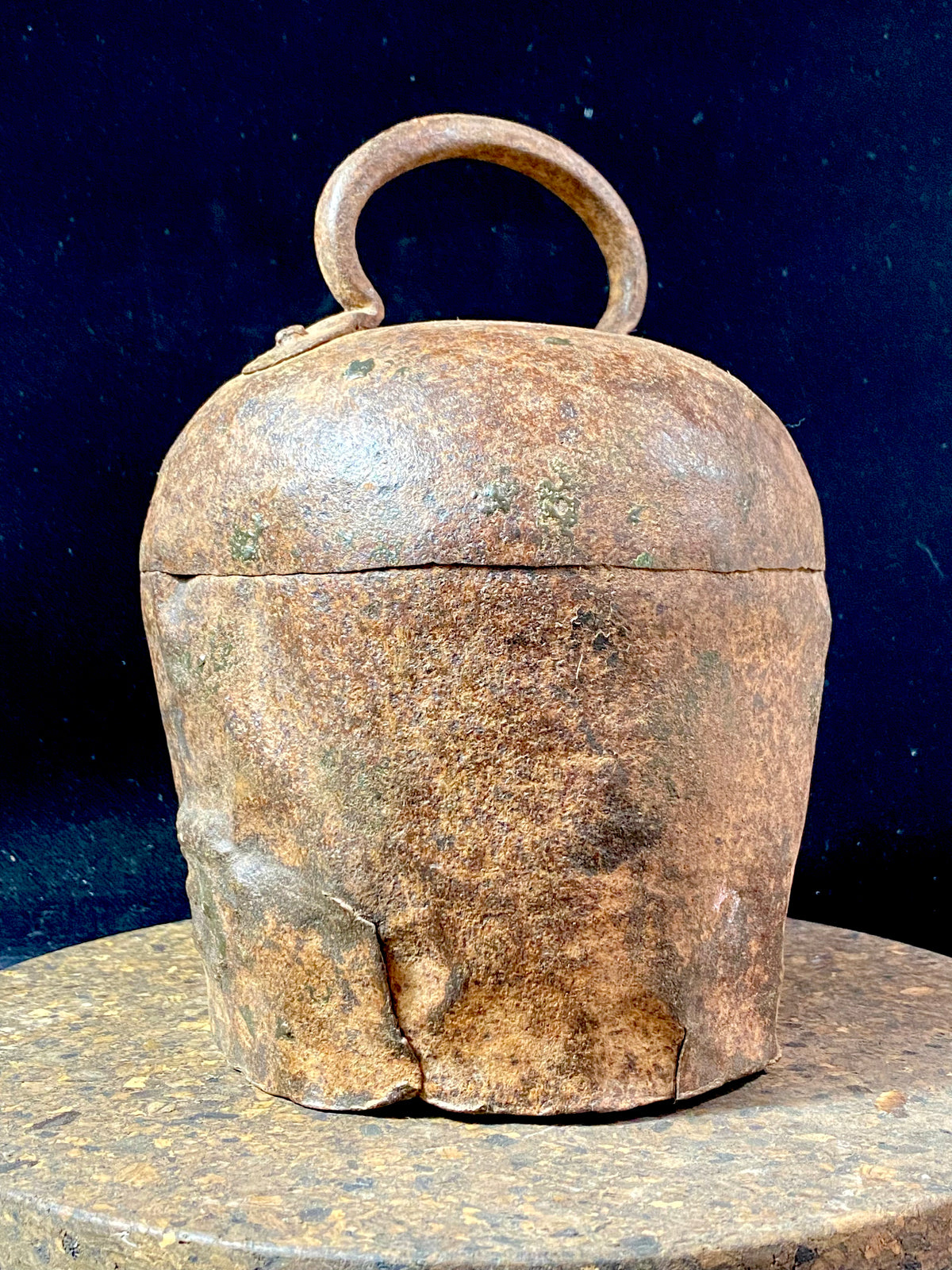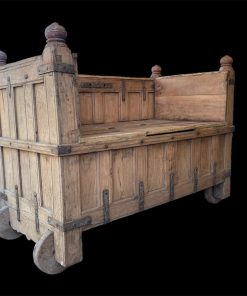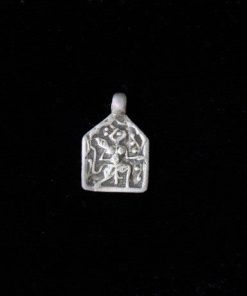Sri Lankan Sinhalese Ola Palm Leaf Manuscript Kashgar
$ 1.200,00 $ 300,00
Sinhalese palm (ola) leaf book, ca. early 20th century CE. South Asia, Southern India, Sri Lanka.
The book contains 60 leaves bound by two cords between a pair of wood slat covers. the blank end piece leaves suggest that the book contents are intact. The drawstring allows the reader to bind the palm leaves together when in storage to keep their flattened shape.
These manuscripts are religious texts made for use in Hindu-Buddhist monasteries. The writing was made by impressing a nub tip into the page, a black ink made from charcoal and resin was then rubbed into the impressions, leaving a stained darkness to edge of the pages, which further protected them from insect depredation. It has been noted elsewhere that the scripts from southeast Asia such as Sinhalese, Tamil, Burmese, etc. were adapted into curving and rounded forms because angular writing would tear up the horizontal leaf fibres.
Measurements: Length 56 cm (22″) x height 7.5 cm (3″) x width 4.5 cm (1.75″)
Provenance: private collection belonging to Australian collector Bernard Heaphy, acquired in the 1970s out of Burma, and purchased from a monastery via a broker in Bangkok.
Condition: missing original cotton cord (replaced by rope string). Some tears and fraying to palm leaves. Chips and losses to peripheries of wood covers. Discoloration and staining, with some fading to text.
Fast Shipping and Professional Packing
We offer a wide range of shipping options owing to our long-running partnerships with UPS, FedEx and DHL. Our warehouse staff is highly trained and will pack the goods according to our precise and exact specifications. Before shipping, all goods will be thoroughly examined and safely secured. We ship to thousands clients each day across multiple countries. This is a sign of our determination to become the biggest online retailer in the world. The warehouses and centers for distribution are in Europe, as well as the USA.
Orders that contain more than 1 item are assigned processing periods according to each item.
We will inspect each and every one of the products before they are shipped. Most orders are now shipped within 48 hrs. The time to deliver varies from 3-7 days.
Returns
The inventory is always changing and we cannot completely manage it because of the fact that multiple stakeholders are involved, including our warehouse and factory. The stock levels may fluctuate at any moment. Be aware that it is possible that your order will be out of stock after you've placed your order.
Our policy lasts thirty days. If it's been more than 30 days since the date you purchased your item and we're unable to offer you a complete refund or exchange.
You can only return an item if it is unused and still in the same condition when you first received it. It must also be returned in its original packaging.
Related products
Tribal Jewellery
Tribal Jewellery
Uncategorized
Tribal Textiles
Pendants
Necklaces
Candles & Candleholders
Statuary
Decorative homewares
Furniture

